Click on the Sandals news article or a category learn more. We recognize that Sandals vacations are not just an investment, but often the highlights of our lives, and we take that responsibility seriously. We want to ensure you have the best Sandals experience.
Interested in Sandals jobs and how to become a travel agent? Click here to learn more:
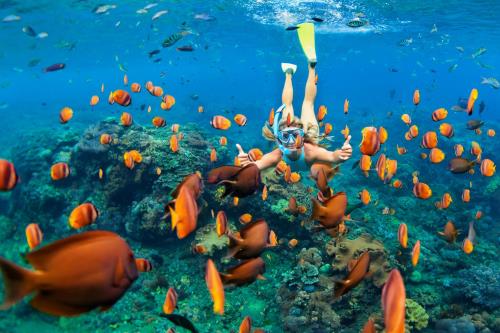
The islands of the Caribbean are recognized as some of the best vacation destinations in the world. Each island has its very own natural wonders, customs, and culture, which creates a unique experience for anyone who visits them. This is why every year thousands of visitors flock to the Caribbean from the United States, the United Kingdom, and other countries around the world.
Many of the attractions and adventures in the Caribbean involve the natural habitat of the islands. Snorkeling is no different and many of the beaches offer a unique underwater world with a thriving fish population and coral formations that enhance the experience for snorkelers. During a dive in the Caribbean, you're likely to come across tropical fish like parrotfish, butterflyfish, grout, snapper, and grouper for starters. You might also see sea turtles, seahorses, moray eels, eagle rays, lobsters, stingrays, lots of different types of coral reefs and sponges, and even shipwrecks.
If you want to find out more about the best snorkeling locations in the Caribbean, keep reading as we've listed some of the most incredible spots!
Courtney Montgomery is a highly experienced Sandals Resorts travel guru and lover of global adventures. Specializing in Sandals Resorts vacations. She has extensive experience working with all-inclusive resorts, helping couples create unique and culturally rich wedding celebrations.
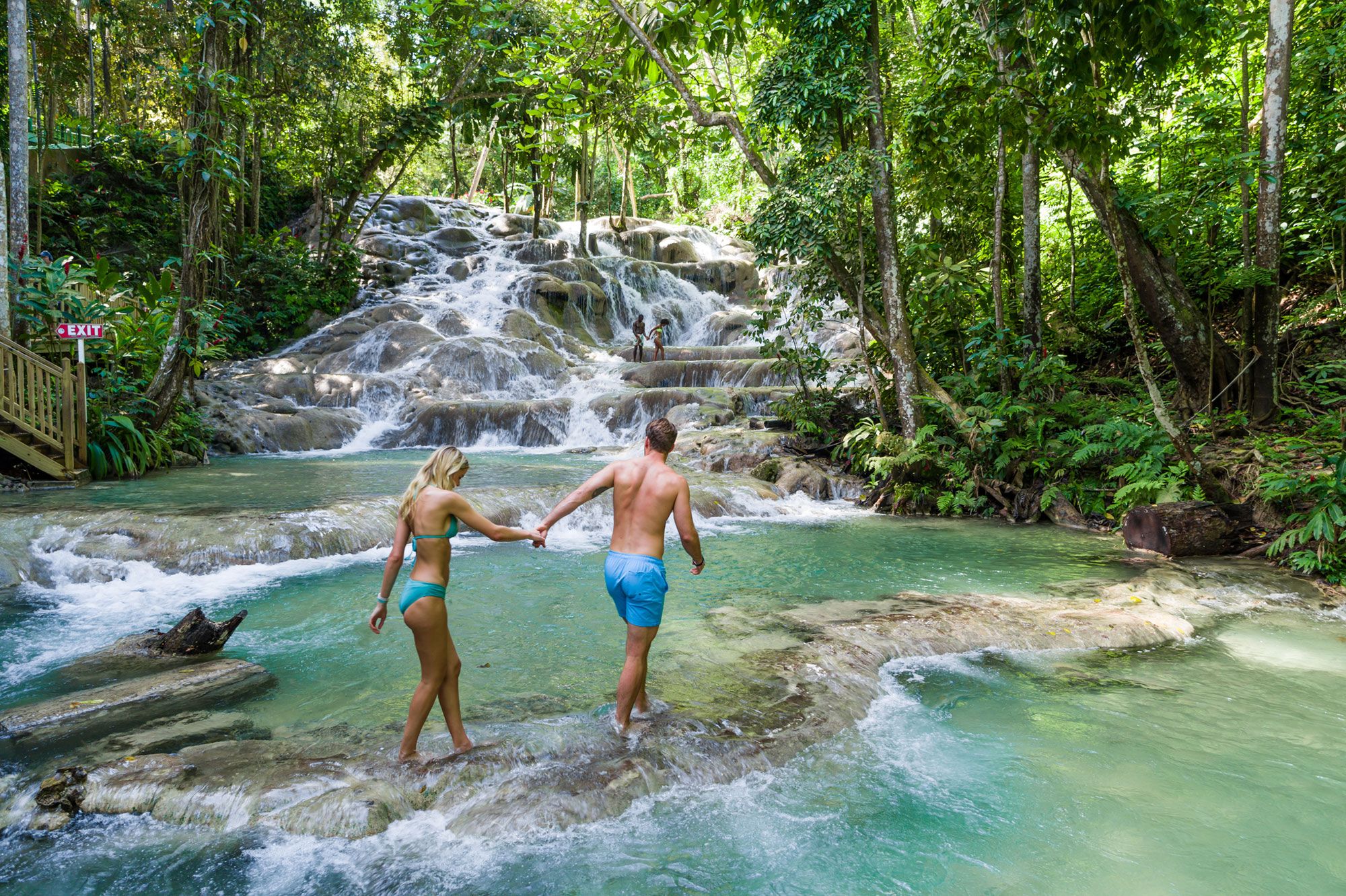
This island in the northern Caribbean is the third-largest in the region.
However, despite these impressive features, the island is better known for its rich culture, beautiful beaches, and scenic landscape. What's even better is the 600 miles of coastline and vibrant coral reefs in its midst that make Jamaica the ideal location for beginner and more advanced snorkelers. Here are some of the best snorkeling locations in Jamaica:
Looking for Sandals Resorts travel agents? We offer the best prices and packages, including airfare to and from destination, airport transfers, excursions and activities, travel insurance and so much more.
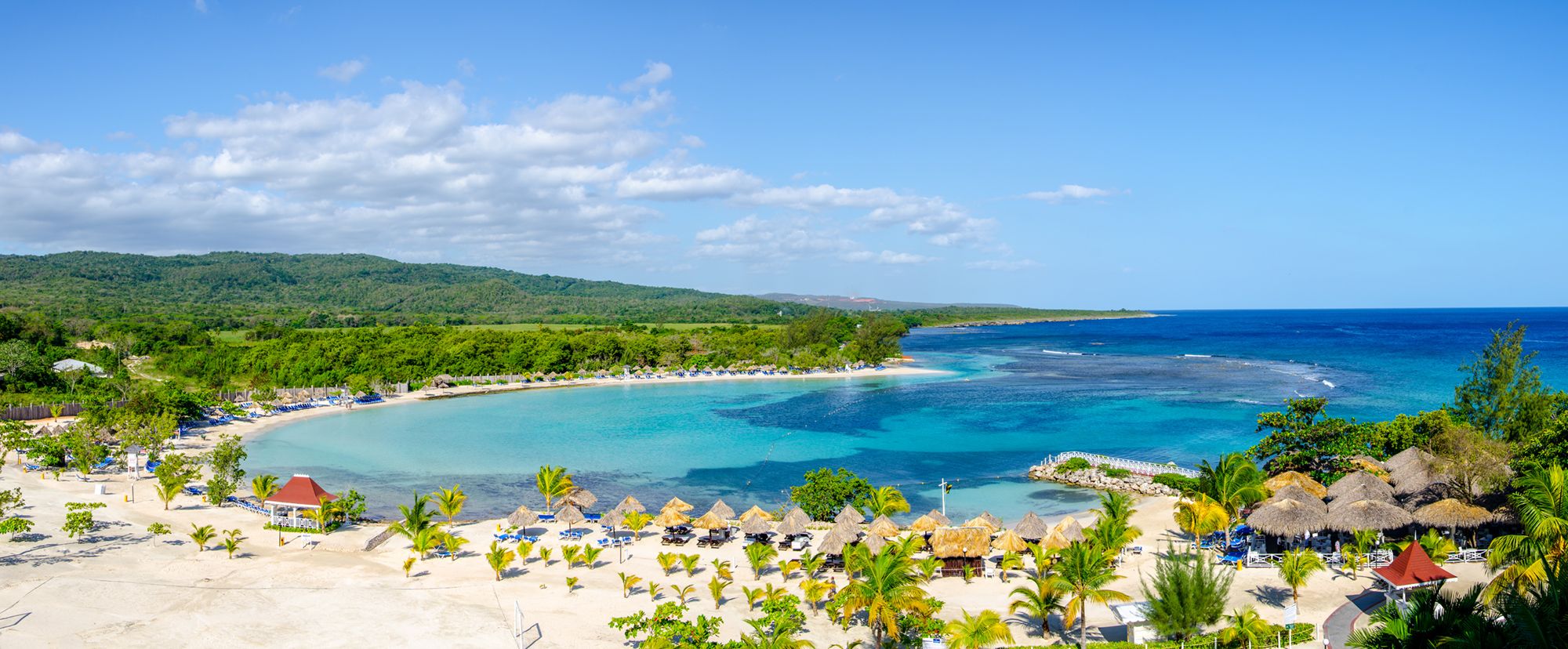
Traveling along Jamaica's northern coast will take you to Runaway Bay, which is a sunny beach just off
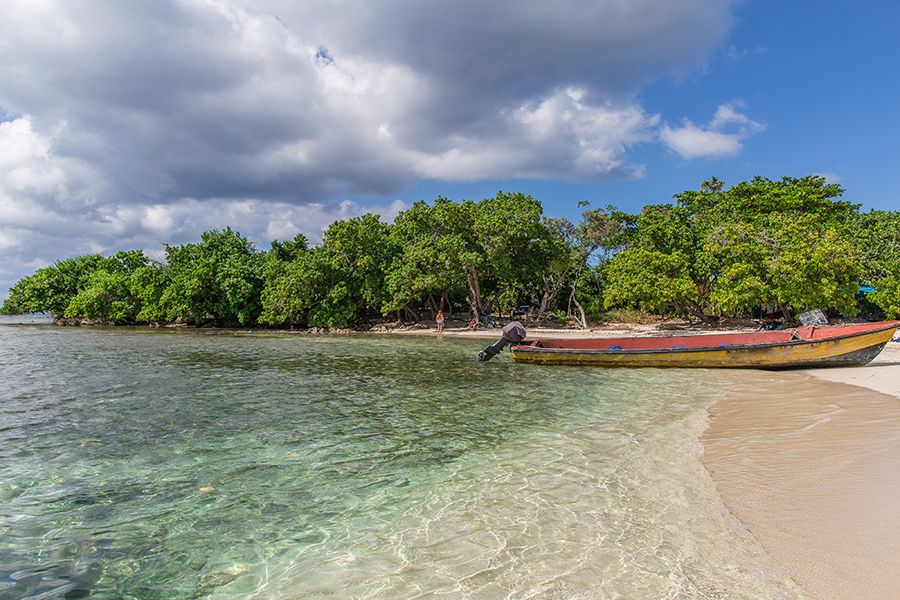
Just off the shores of
Contact us now for a free package quote including flights, excursions, accommodations, group bookings and more.
Click here to view our best deals online.
Get A Quote Now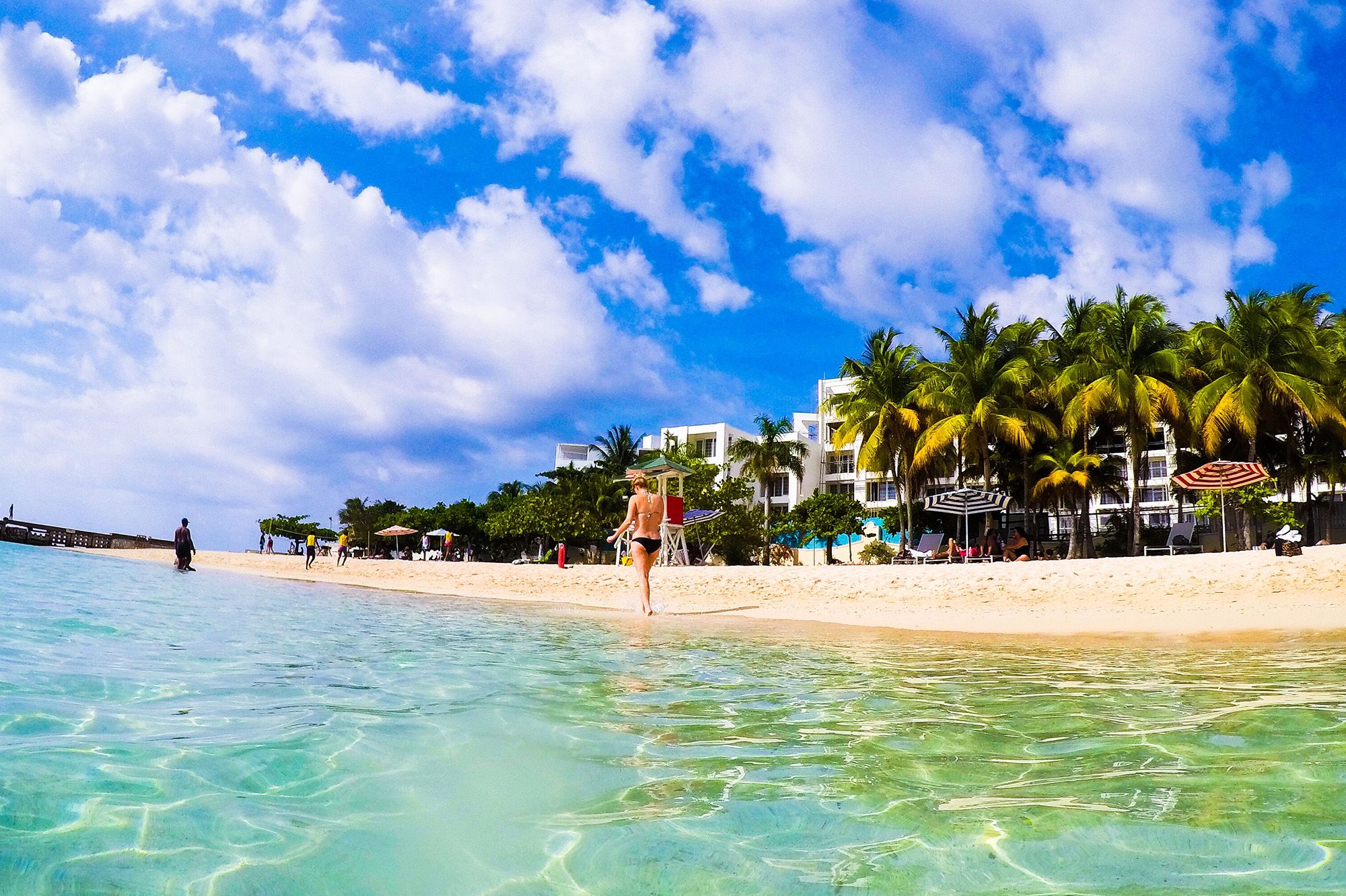
If you plan on spending time in
Expert tip: There's lots of great
snorkeling in Jamaica , and while on this island you can indulge in a luxurious experience at one of theall-inclusive resorts in Jamaica .
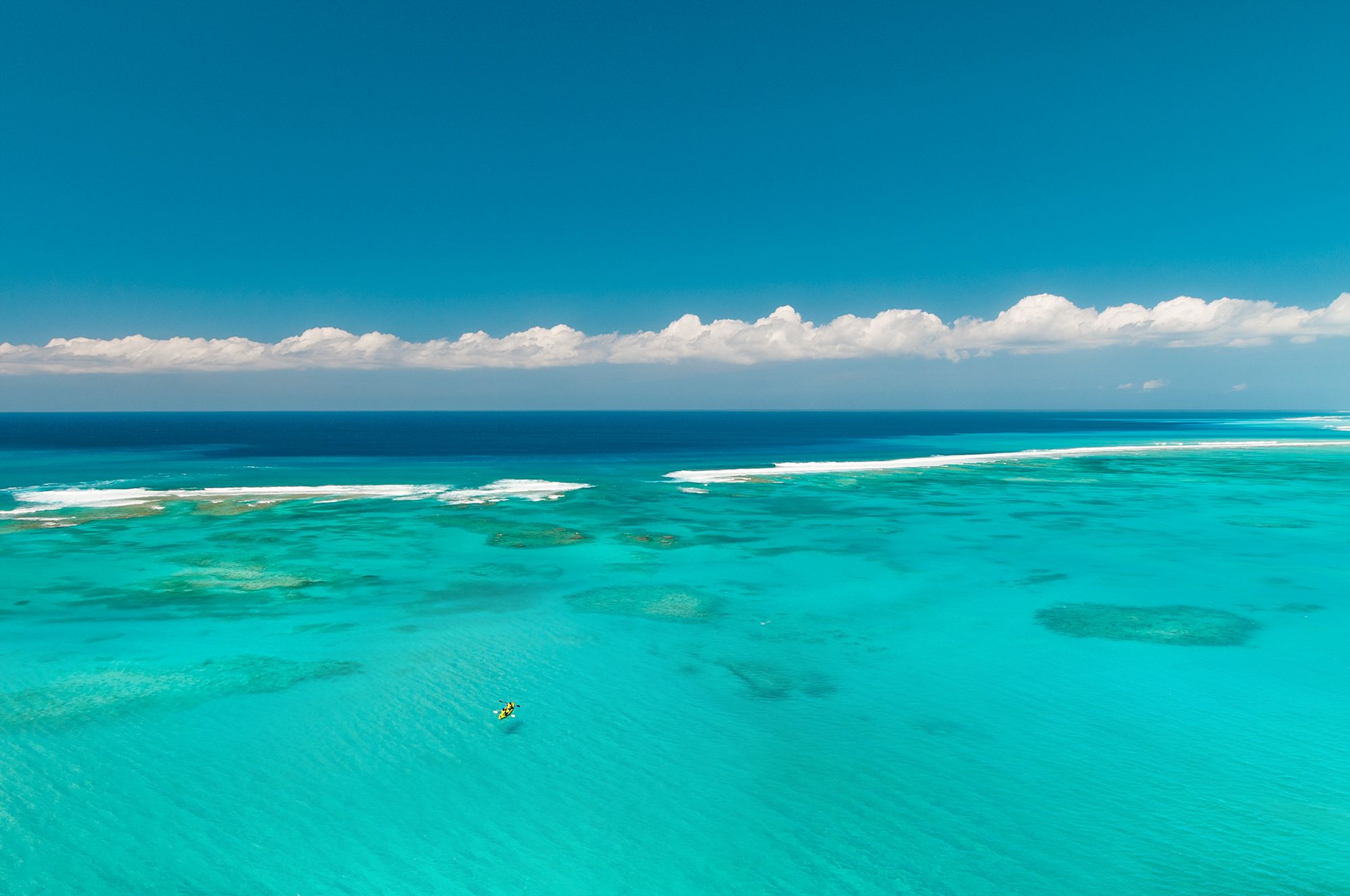
The
One of the best places to snorkel in Turks & Caicos is around the Turks & Caicos Barrier Reef. This barrier reef is the second largest of its kind in the Western Hemisphere and it is home to about 60 coral species and 250 fish species. Other than the Turks & Caicos Barrier Reef, there are other interesting places to snorkel in this region as well.
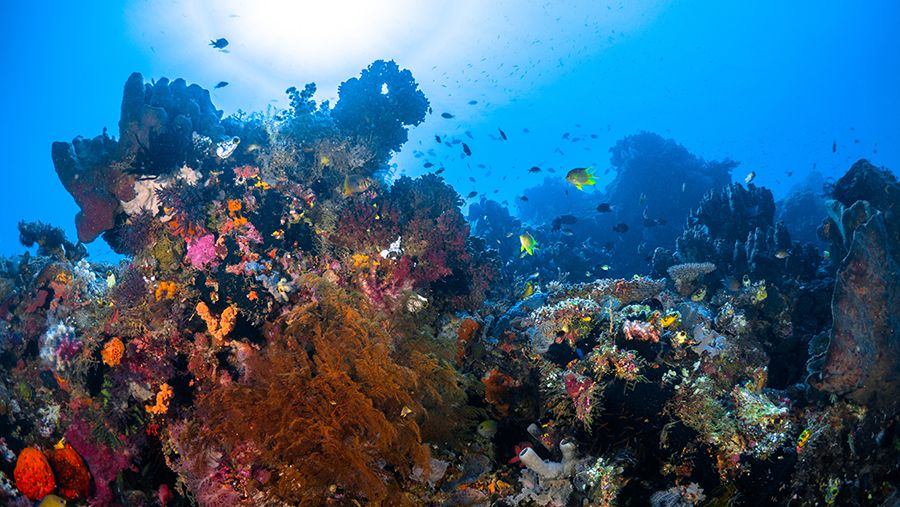
One of the most famous snorkeling sites in the Turks and Caicos Islands would definitely be
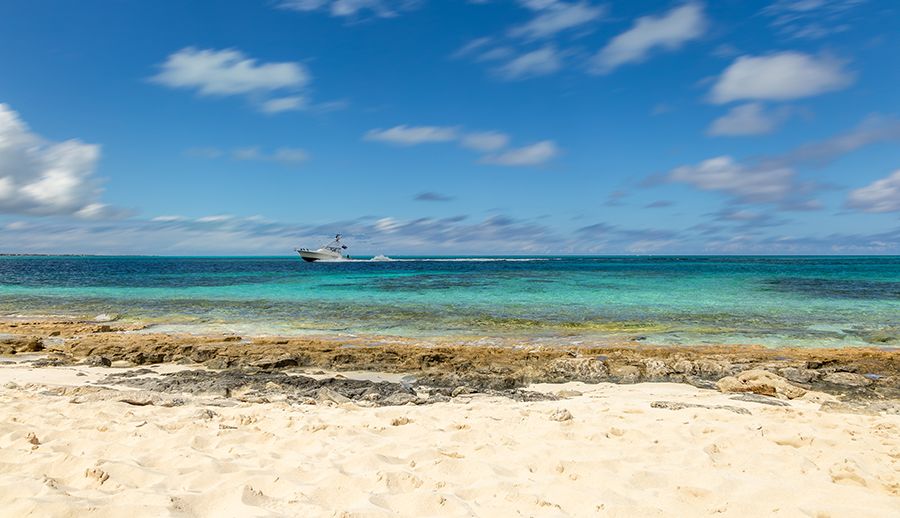
Paying a visit to this barrier reef, located near Turtle Cove in Providenciales, is guaranteed to be one of the most amazing snorkeling experiences you will have. Upon arrival at the beach, you can dive into the water to explore the different coral reef systems, seagrass, and sea beds and swim among fishes such as the revered queen angelfish, barracuda, green turtles and so much more.
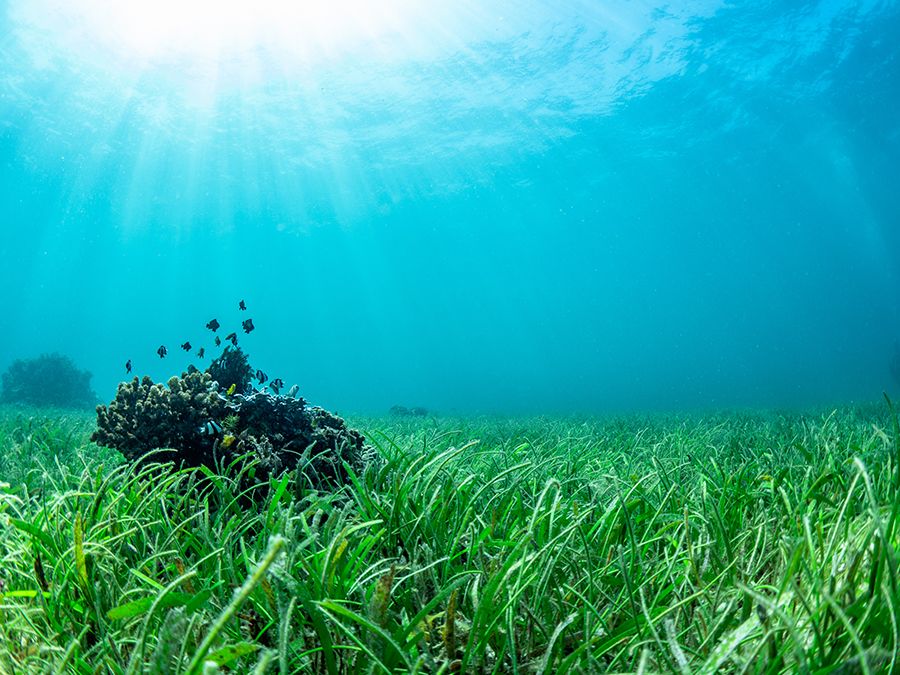
This national park has many different snorkeling sites to choose from, including barrier reefs, sea sponges, caves, and seagrass beds. To fully enjoy a snorkeling trip to this park, you should book a tour with a tour guide that will take you to the best spots and enhance the experience. Be sure to take in the rugged landscape, the wetlands, and the bird life whilst you're at it.
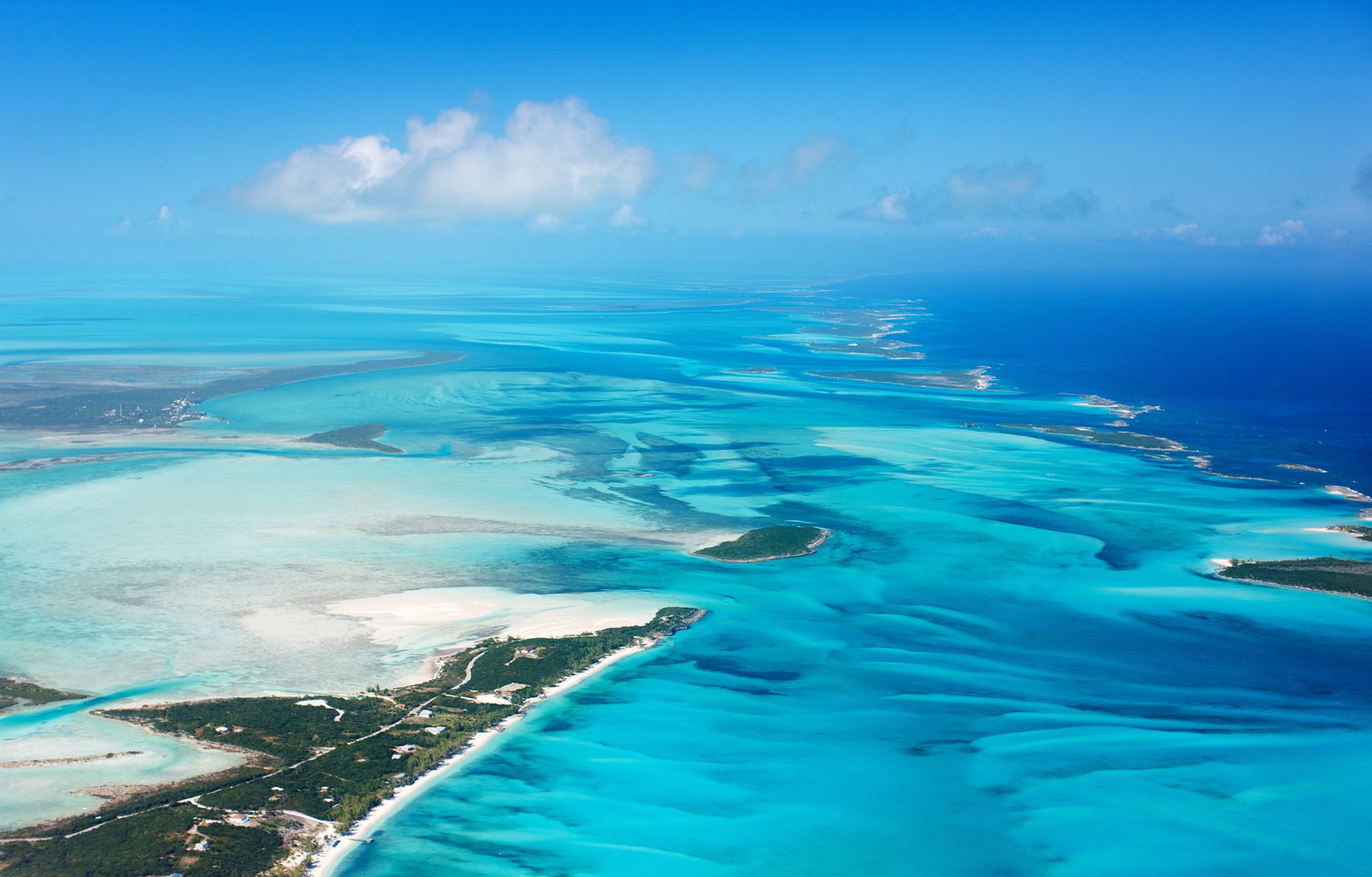
Contact us now for a Sandals free package quote including flights, excursions, accommodations, group bookings and more.
Click here to view our best deals online.
Get A Quote NowA snorkeling trip can be especially thrilling in The Bahamas. Some of the locations you simply must explore include the Andros Barrier Reef, which is one of the longest coral reefs in the world at 190 miles. It is also the third-largest living organism in the world with more than 164 varieties of coral and fish. We've listed below three other snorkeling spots we love in The Bahamas.
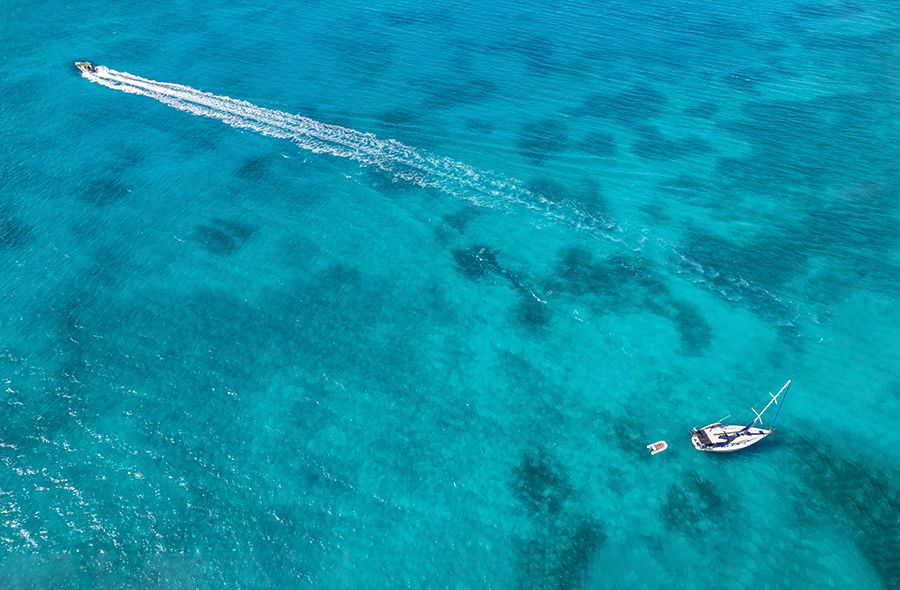
Stocking Island is an excellent snorkeling destination that is well known for its beautiful coral gardens and lively underwater world. In the waters around this island, you'll find lots of undersea caves, blue holes, and marine life. All it'll take to get to Stocking Island is a short boat ride from Great Exuma. Aside from snorkeling, the peaceful nature of Stocking Island makes it a great location for a picnic or just relaxing.
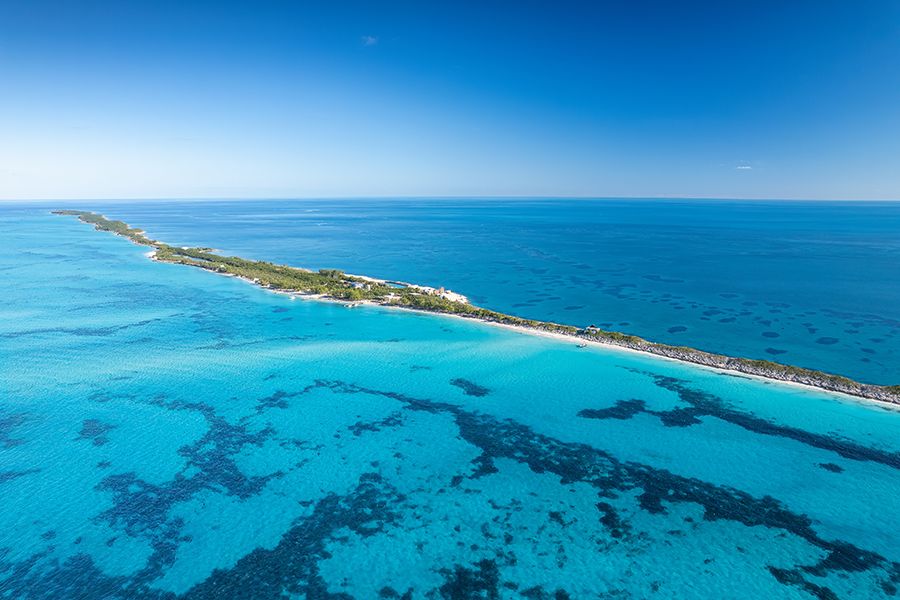
A 30-minute boat trip from Paradise Island or a 25-minute boat trip from
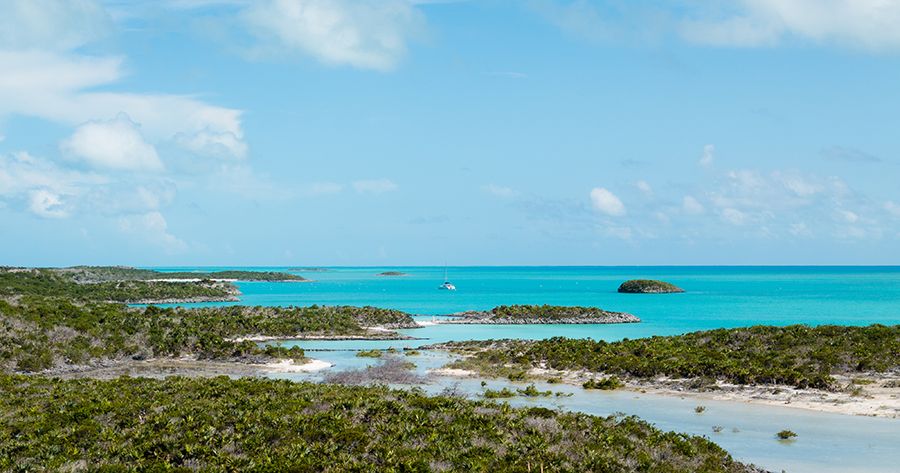
The Exuma Cays Land and Sea Park stretches more than 176 square miles. It is a marine reserve and the first of its kind in The Bahamas. The land and sea park consist of a wide expanse of reef, cays, and sea, and it is only accessible by private boat or charter. All wildlife within this area is protected, and fishing is prohibited. These protections have, over the years, helped the various species of marine life here to thrive, which can make for the most fulfilling snorkeling experience.
Expert tip: The Bahamas is one of the best dive destinations in the Caribbean. If you want the ultimate snorkeling experience on these islands, consider staying at one of the
all-inclusive resorts in the Bahamas where snorkeling and scuba diving (up to two tanks per day) can be included in your stay.
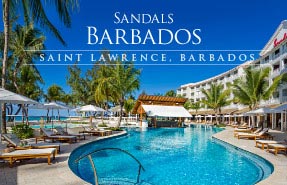
Barbados offers a unique experience for snorkelers. As a coral limestone island, Barbados has several coral formations and has been praised for having some of the healthiest reefs in the Caribbean. There are also many underwater shipwrecks that can add to the thrill and excitement of snorkeling.
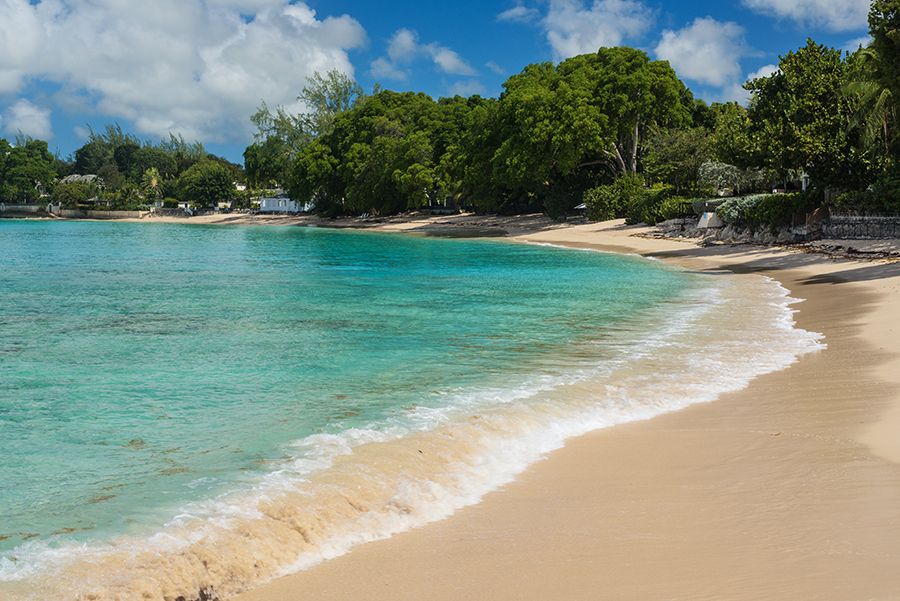
A trip along the west coast of Barbados will take you to Gibbs Beach, a serene, undisturbed location with shady trees, calm waters, and white sands. The clear, tranquil waters create the perfect conditions for snorkelers who are sure to find rainbow fish, cowfish, needlefish, and other intriguing marine life.
Complete Sandals vacation planning - transportation, resort stays & experiences included.
Click here to view our best deals online.
Get A Quote Now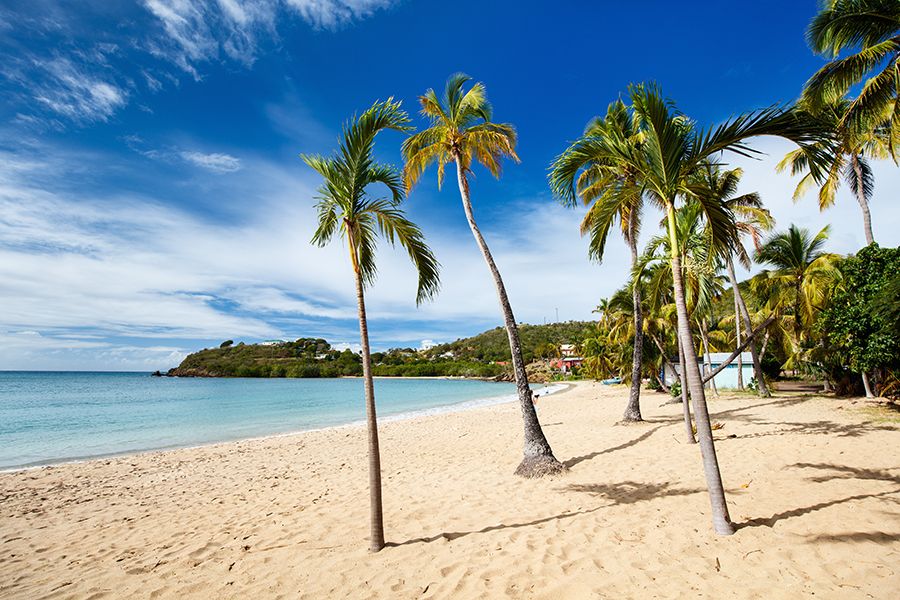
This harbor, which is named after a Lord Proprietor of Barbados, is a relaxed spot with one of Barbados' largest beaches.
To the southern end of Paradise Beach lies Freshwater Bay, also known as Pile Bay. This beach gets its name from the freshwater springs found undersea in this area. Freshwater Bay is popular among anglers and visitors looking to laze around in the sun. Snorkelers are also in for a treat because the shallow waters, colorful fish, and coral formations make it a great snorkeling site, especially for beginners.
Expert tip: Barbados has some of the best snorkeling sites in the Caribbean and staying at an all-inclusive resort in
Barbados might be the perfect opportunity to see some of the best ones. AtSandals Barbados , you can book all your dive trips through the resort, which will be helpful as well!
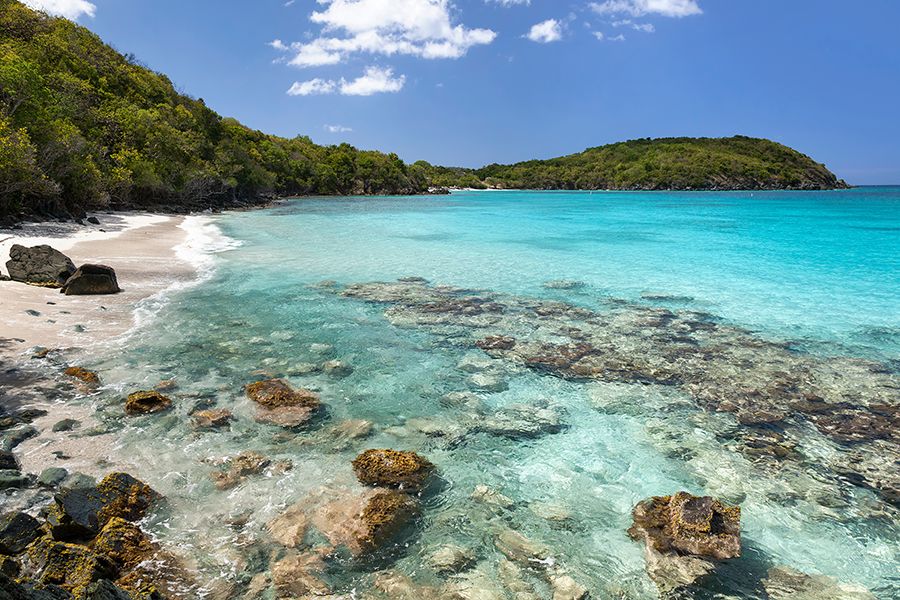
Saint Croix, Saint John, and Saint Thomas are among the group of 50 islands that make up the U.S. Virgin Islands in the Lesser Antilles. Snorkelers have many options to choose from in this region as coral reefs are found around each of the main islands and near most of the other islets. These include patch reefs, deep reefs, and groove formations.
Each of the main islands offers snorkelers a different experience. Saint Croix, which is the largest of the aforementioned islands, has the best-developed barrier reefs. Meanwhile, the day boats in Saint Thomas take visitors to reefs offshore, while the remote Saint John allows snorkelers to swim among the marine life. This includes trumpet fish, sea turtles and so much more.
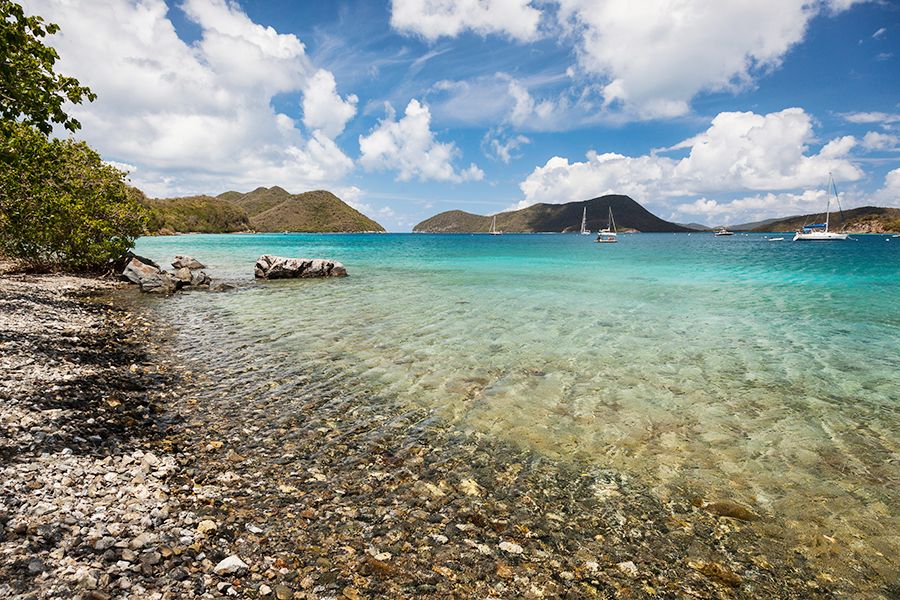
Leinster Bay, also called Watermelon Cay, is one of the best snorkeling sites on the island of Saint John. It has a diverse marine life that snorkelers will appreciate, thanks to the schools of fish like blue tang, barracuda, and grunts and the presence of seagrass beds and coral. Conch, sea turtles, and stingrays are also plentiful here. Access to snorkeling is simple in this area, either you can pass through the beach or use the cobblestone area nearby.
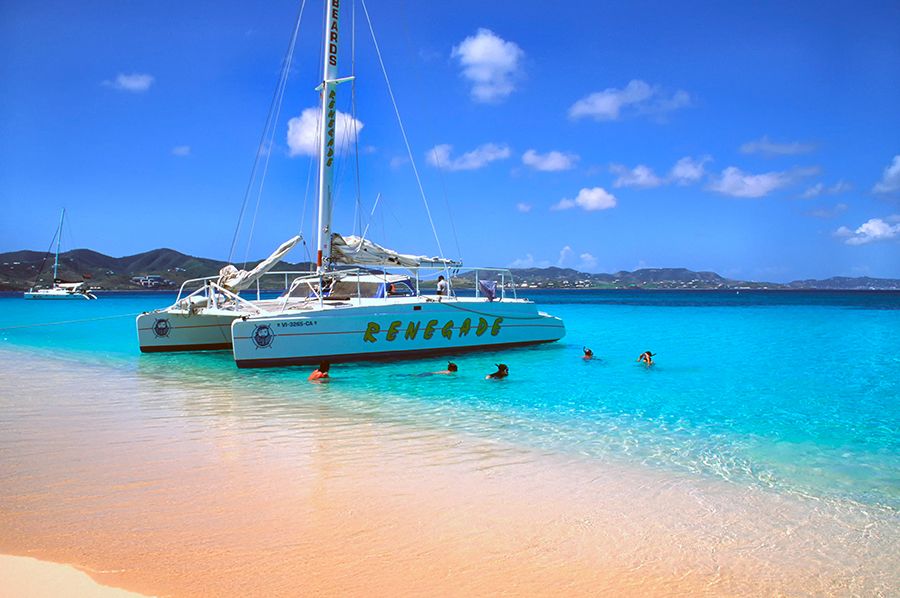
Buck Island is a national park in Saint Croix that spans 167 acres. This area consists of an underwater park and a trail. If you want to visit while in Saint Croix, you'll have to book a tour with one of the snorkeling companies, granting you access to the wonders of the park and all its monuments that you are then free to discover by yourself. Keep an eye out for needlefish, blue tangs, parrotfish, eagle rays, and hawksbill turtles that have made this park their home.
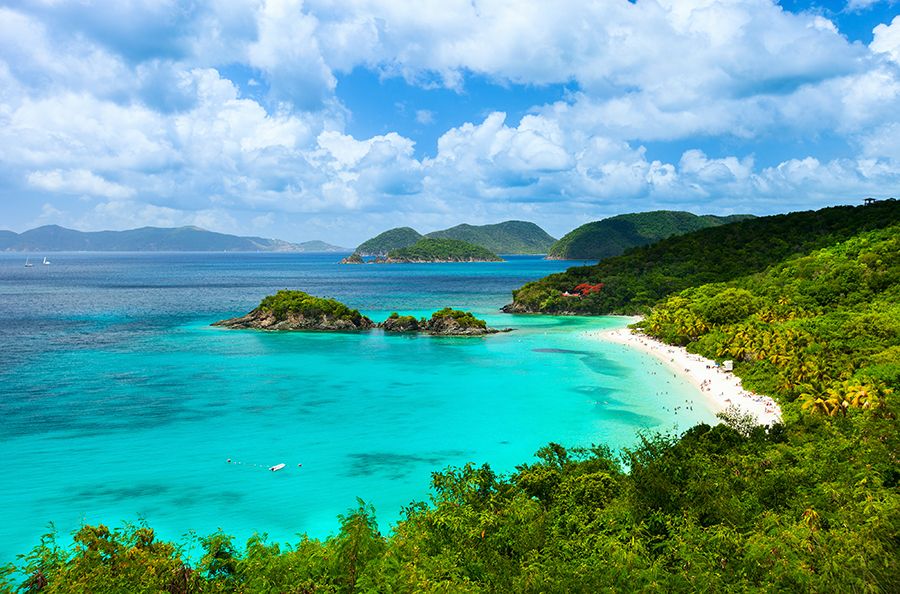
Trunk Bay is a protected beach area in the Virgin Islands National Park. It is well-loved by locals and visitors alike. The underwater snorkel trail at Trunk Bay is enjoyable and interesting and lets you see the variety of sea life present here including stunning coral, exotic fish, crabs, and spotted drums. Snorkeling here is a good start for beginners.
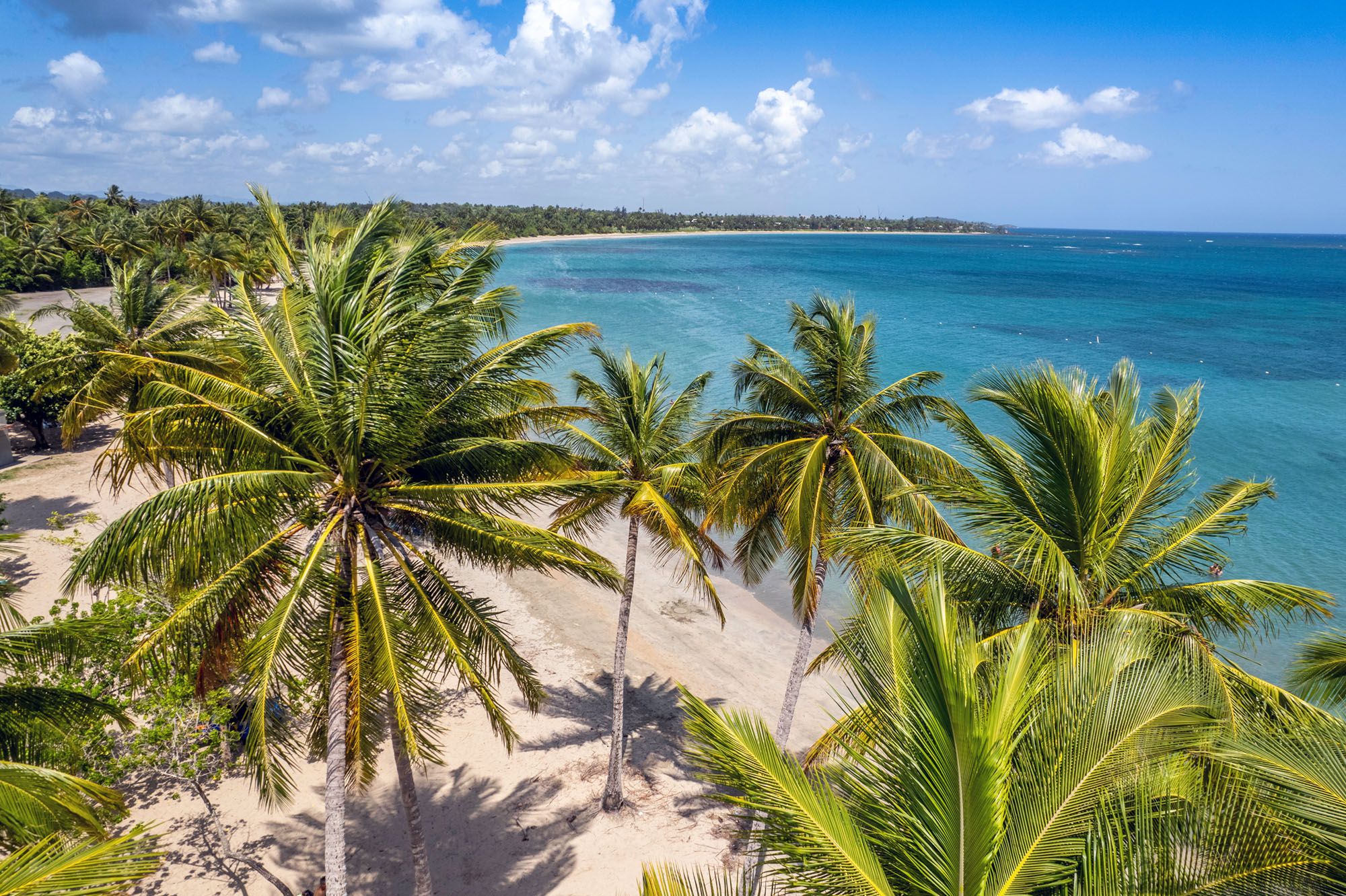
Puerto Rico is a tropical, Caribbean island that can be found to the east of the Dominican Republic and to the west of the Virgin Islands. Similar to The Bahamas, this archipelago is made up of smaller cays such as Old San Juan, Culebra, and Vieques, with the previous two being the most popular ones. Although Puerto Rico is most known for its tropical climate, language, and music, it has so much more to offer, like diving.
Puerto Rico certainly is the place to be for snorkelers and scuba divers, no doubt due to its extensive coastline, clear waters, and the distinct marine world that contains a little bit of everything - mangroves, coral formations, seabeds, and tropical fish. Puerto Rico is indeed a snorkeler's dream.
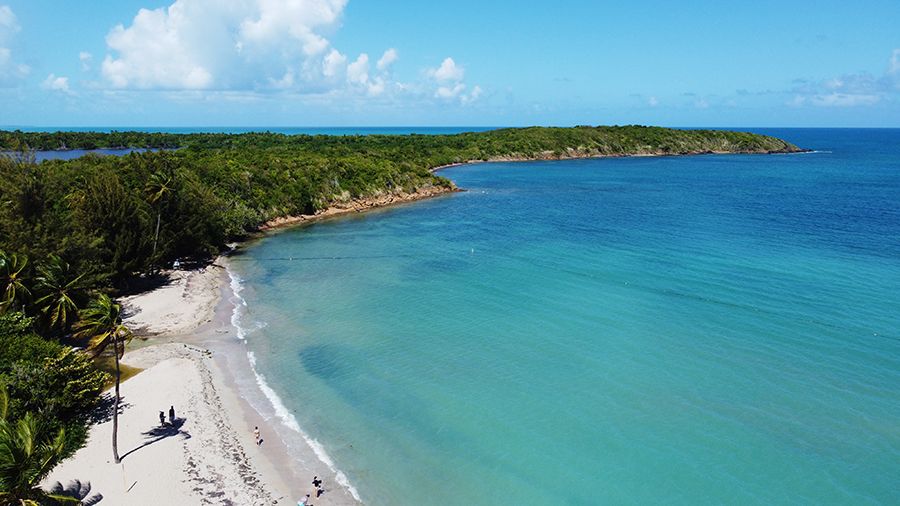
Courtney Montgomery is a highly experienced Sandals Resorts travel guru and lover of global adventures. Specializing in Sandals Resorts vacations. She has extensive experience working with all-inclusive resorts, helping couples create unique and culturally rich wedding celebrations.
Seven Seas Beach is calm and tranquil and it is located in the eastern town of Fajardo, Puerto Rico. It is well equipped with bathrooms and showers and even picnic benches for a fun day out. The warm, shallow waters here are welcoming to sea bathers, and snorkelers in particular will appreciate the view of the coral reefs and sea life. If you choose to go snorkeling here, you might spot some interesting sea creatures among the coral and rock formations on the beach.
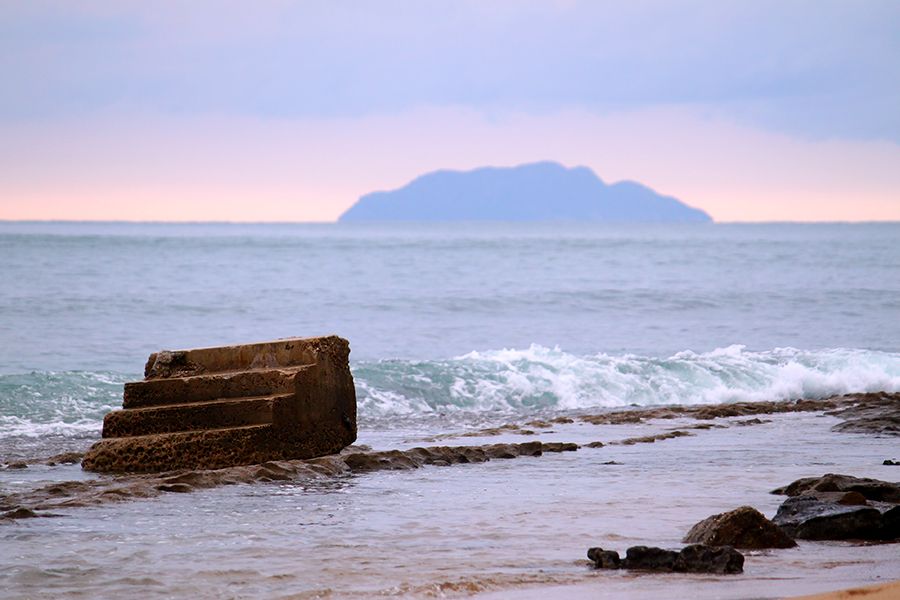
Steps Beach is located in the town of Rinc�n along the west coast of Puerto Rico. This town is a popular spot for surfing during the winter, but when the tide slows down, the waters at Steps Beach are calm enough for snorkelers to explore. Snorkelers would be interested in the diversity of the underworld here where tropical fish, various sponges, sea turtles, and the Elkhorn Coral Forest can be found.
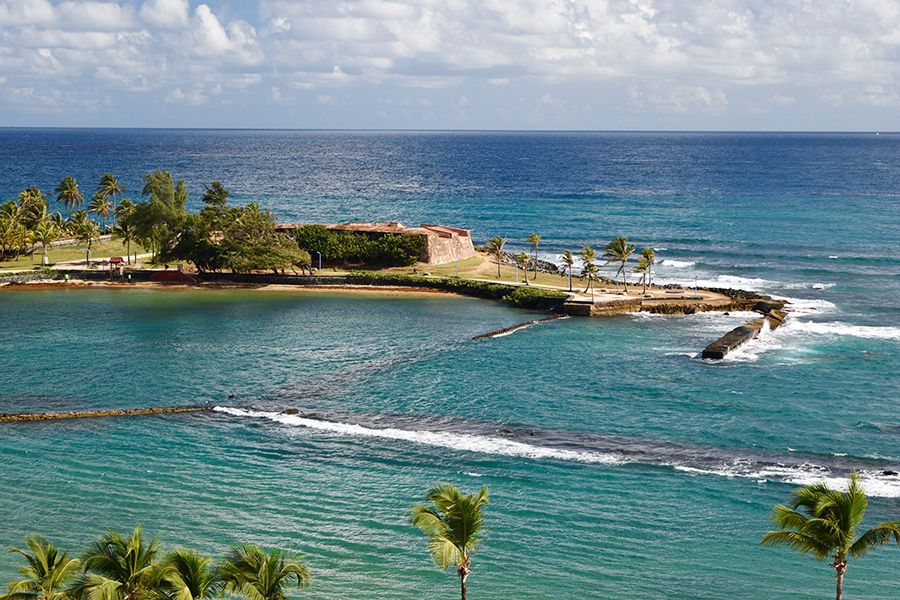
Escambr�n is a charming beach in the northeastern town of San Juan in Puerto Rico. It is lined with palm trees that provide adequate shade while the coral reef formations protect the beach itself. Snorkeling at Escambr�n is sure to be rewarding and snorkelers can choose between the calm waters of Playa 8, the main beach, and Playa 9 called Bateria El Escambron.
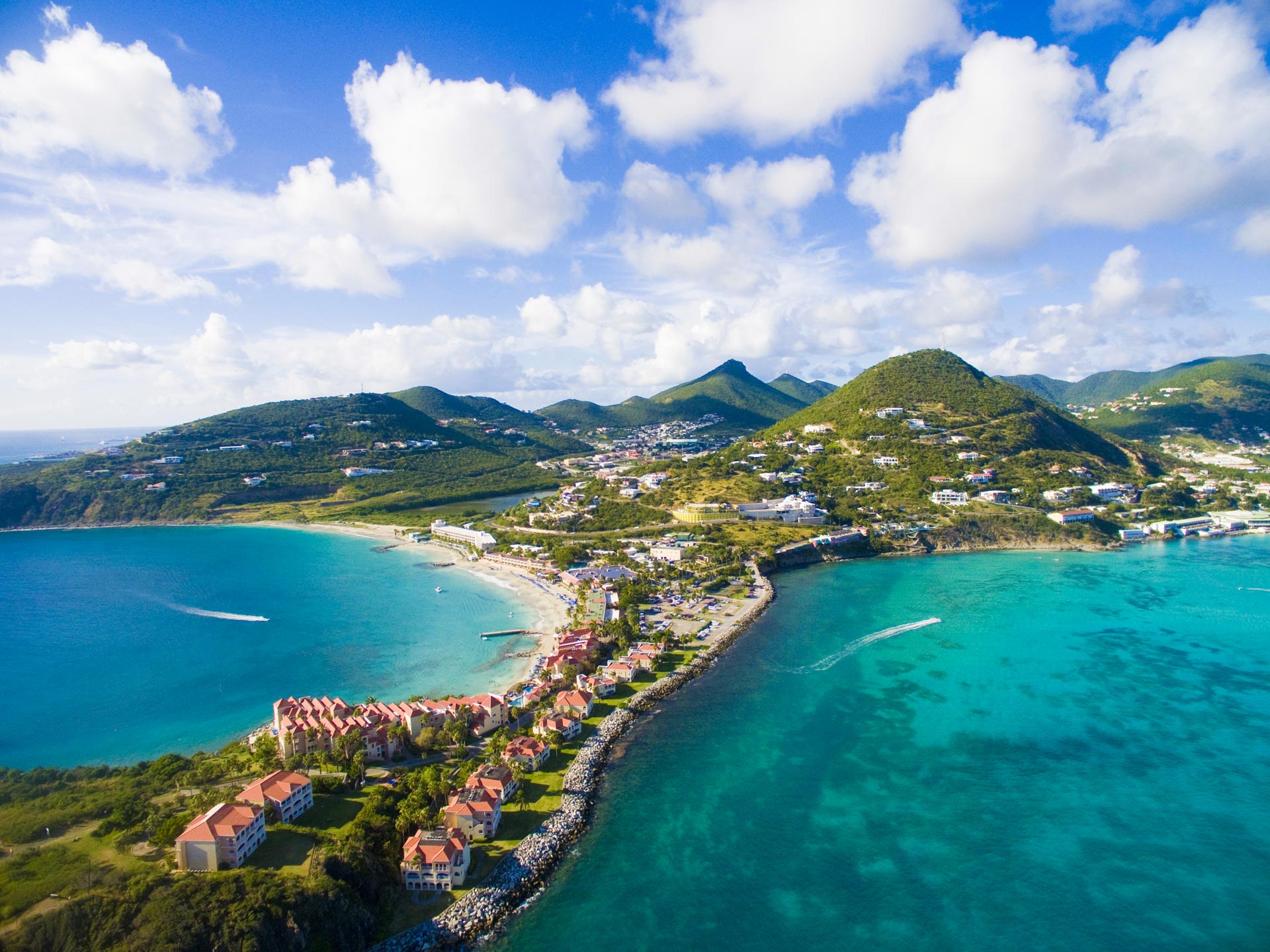
This small island is further divided into two cultural hubs: namely Saint Martin, which is part of the French Republic, and Sint Maarten, which is part of the Kingdom of the Netherlands. The influence of both of these territories undoubtedly contributes to a unique culture on the island and its language, customs, and rituals.
The diversity of this dual island can be seen in the variety of adventures visitors can participate in. Snorkeling is one such activity with the best spots being easily accessible. This is a plus for those looking to venture off on their own while enjoying a dive vacation here.
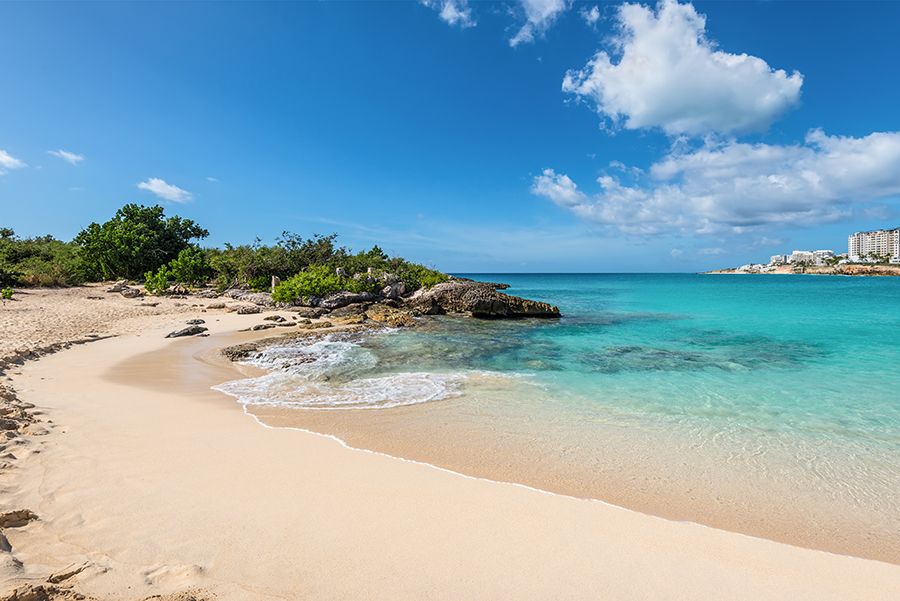
Mullet Beach in southern Sint Maarten is a calm beach that is popular among locals looking to enjoy some swimming, surfing, or snorkeling. The wide variety of marine life here makes snorkeling very rewarding. Sightings can include octopus, puffer fish, angelfish, and wrasse. There are lots of fish by the rocks at Mullet Bay, but you may want to be careful because the waters tend to be a bit rough.
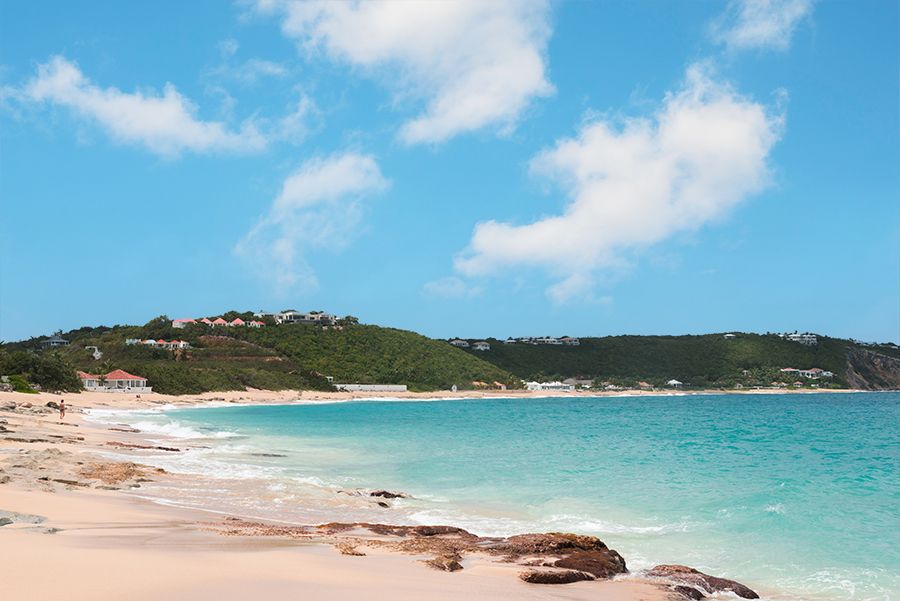
Baie Rouge is located in Saint Martin, which is the French-speaking side of the island. This beach is a beautiful one, with pink sands and turquoise waters. It is relatively remote, giving visitors privacy and alone time. Snorkelers will appreciate the eastern side of the beach, particularly because of the vibrant reefs where you're likely to see fishes like snapper and blue tang.
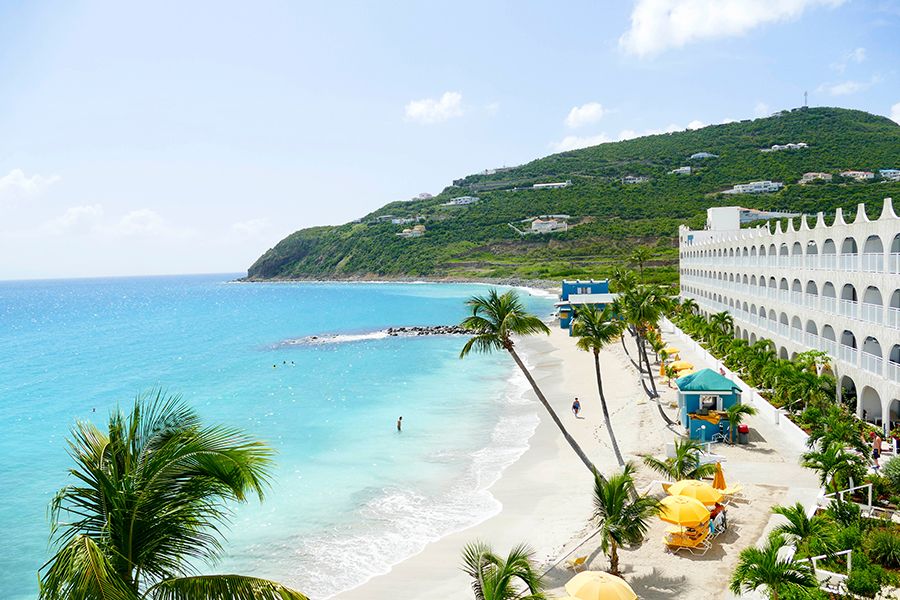
Between Simpson Bay and Philipsburg lies Little Bay Beach, a picturesque and slightly secluded spot with gentle waters and white sands. Snorkelers will enjoy a dive experience here that can come with lots of pleasant surprises. The best area to snorkel here is near the Tiki Hut on the left side of the bay. There you'll find wrecks from helicopters and submarines where marine animals now live.
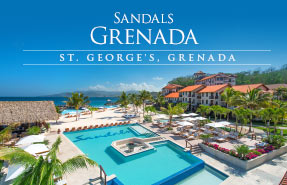
This island is relatively untouched in comparison to other Caribbean territories, allowing it to retain much of its natural beauty and awe. Grenada has a rich marine life with plenty of coral reefs that are preserved and healthy. All of these factors add up to quite the incredible snorkeling experience!
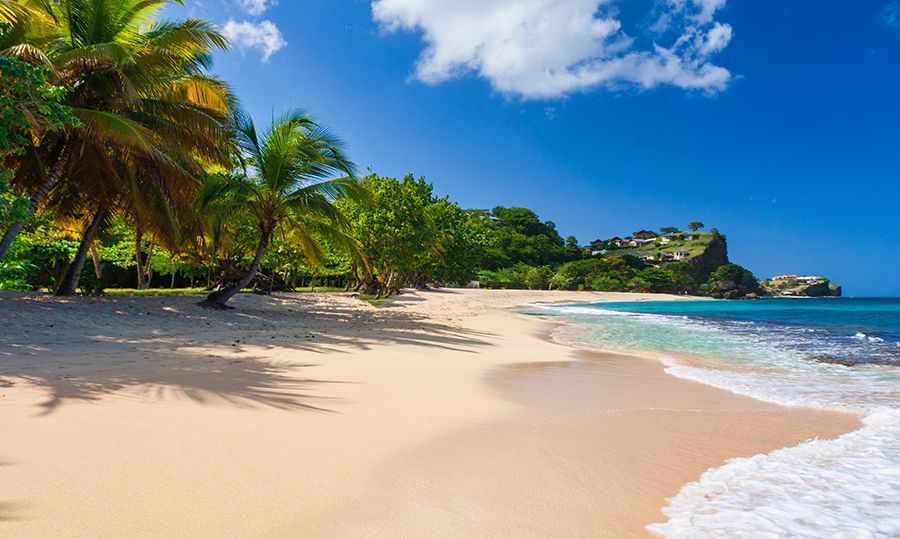
Grand Anse Beach stretches for two miles and quite a few hotels and resorts in Grenada are located near this beach.
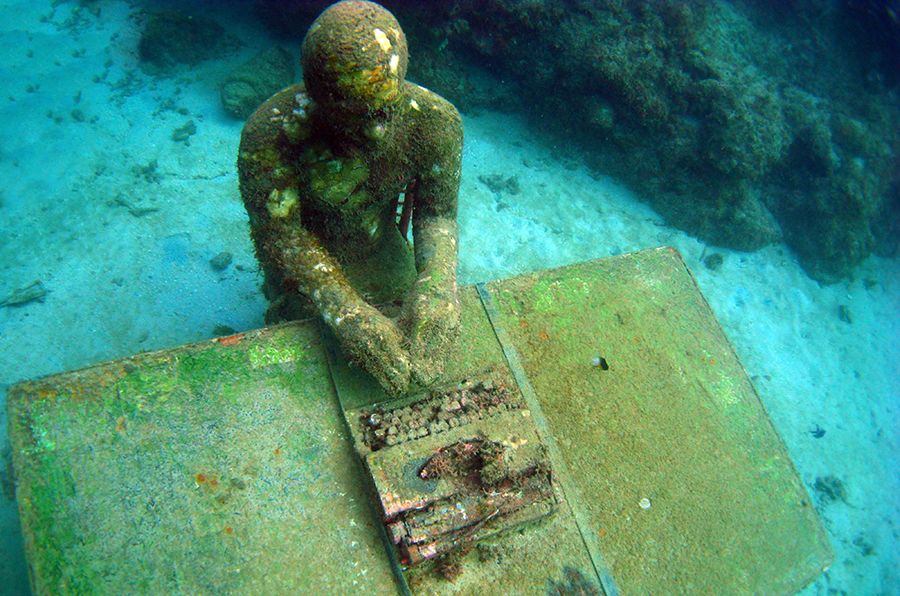
In 2006, the Molinere Bay
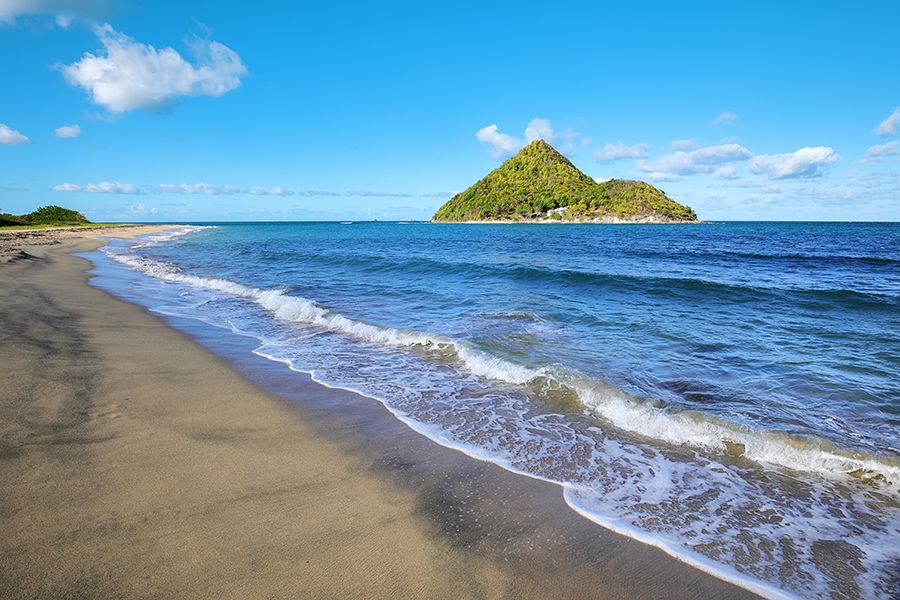
Levera Beach is part of the 450-acre Levera National Park in northeastern Grenada. This is one of the best snorkeling locations on the island and it gives snorkelers an up close and personal view of coral reefs, mangroves, swamps, and seagrass beds. The influence of the Atlantic means that this beach may be a bit rough, so snorkelers should stick to the swimming areas that have been designated.
Expert tip: Staying at an
all-inclusive resort in Grenada can make it easy to have that exceptional underwater adventure you're looking for. Check out thisSandals Grenada review , which will tell you everything you need to know about what guests love at this resort.
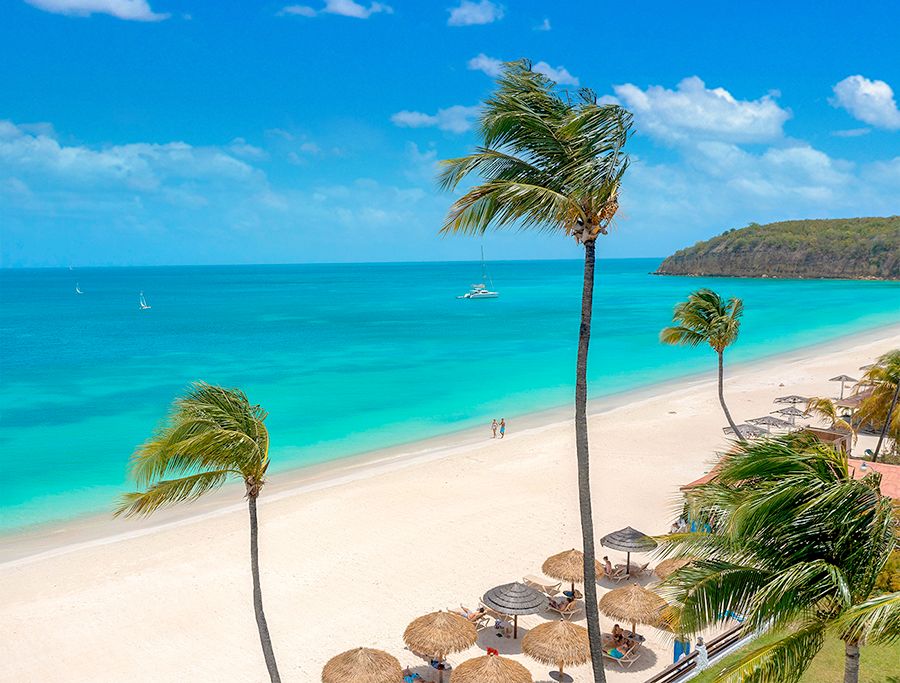
Antigua is almost completely enclosed by coral reefs, with the majority of the fringing corals to the east of the island. The north and south coast are surrounded as well, while the west coast has more sandy areas. All of this means that regardless of which part of the island you choose to stay in, you can snorkel at just about any location.
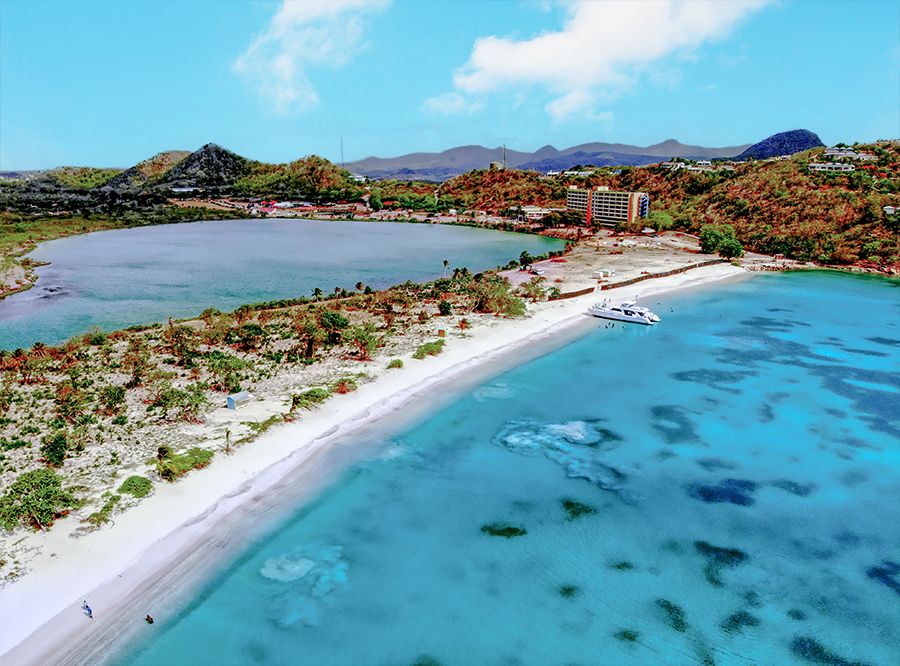
Deep Bay Beach is located near Saint John's, the capital of Antigua. The waters of this west coast beach are calm and transparent making it ideal for snorkeling or
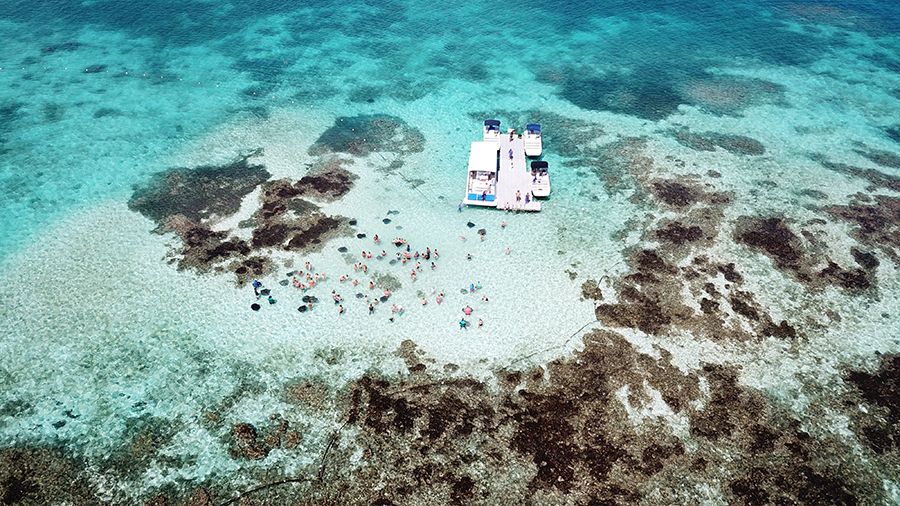
Stingray City is true to its name as it is indeed filled with stingrays. These gentle creatures are accustomed to human contact and love to be pampered by snorkelers. To get to this special city while in Antigua, you'll need to book a boat trip with a local company. The trip will be worth it though, and you'll love all the marine animals and friendly stingrays you get to see while snorkeling.
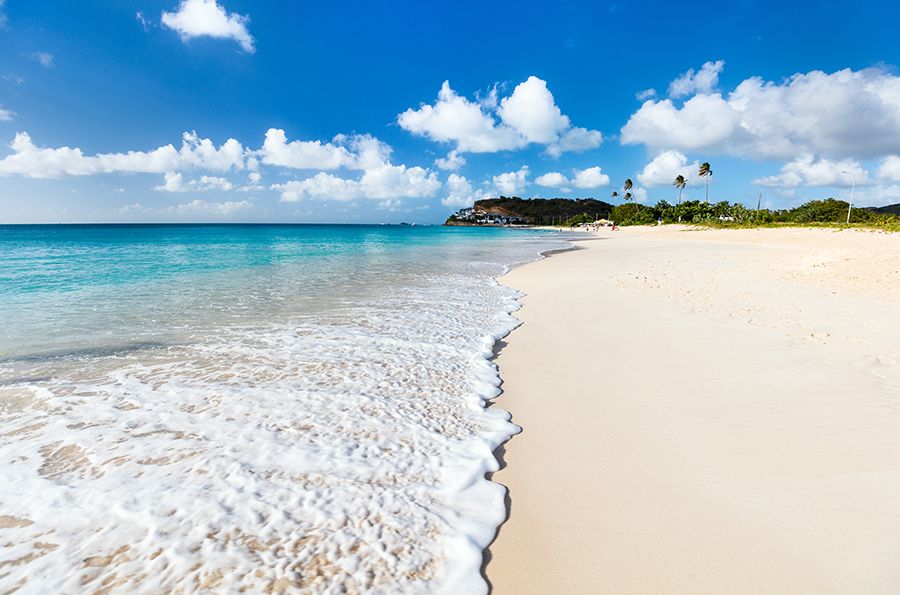
Darkwood Beach is another beach on the west coast of Antigua that is known for great snorkeling. Since it is such a quiet beach, you can have a peaceful experience here that includes sunbathing, swimming, and snorkeling. The coral reef off the coast of this beach is interesting to explore, and while snorkeling here you might come across barracuda, sea turtles, and other marine animals.
Expert tip: If you're not sure where to stay for your Antigua trip, consider one of the
all-inclusive resorts in Antigua where snorkeling is included!
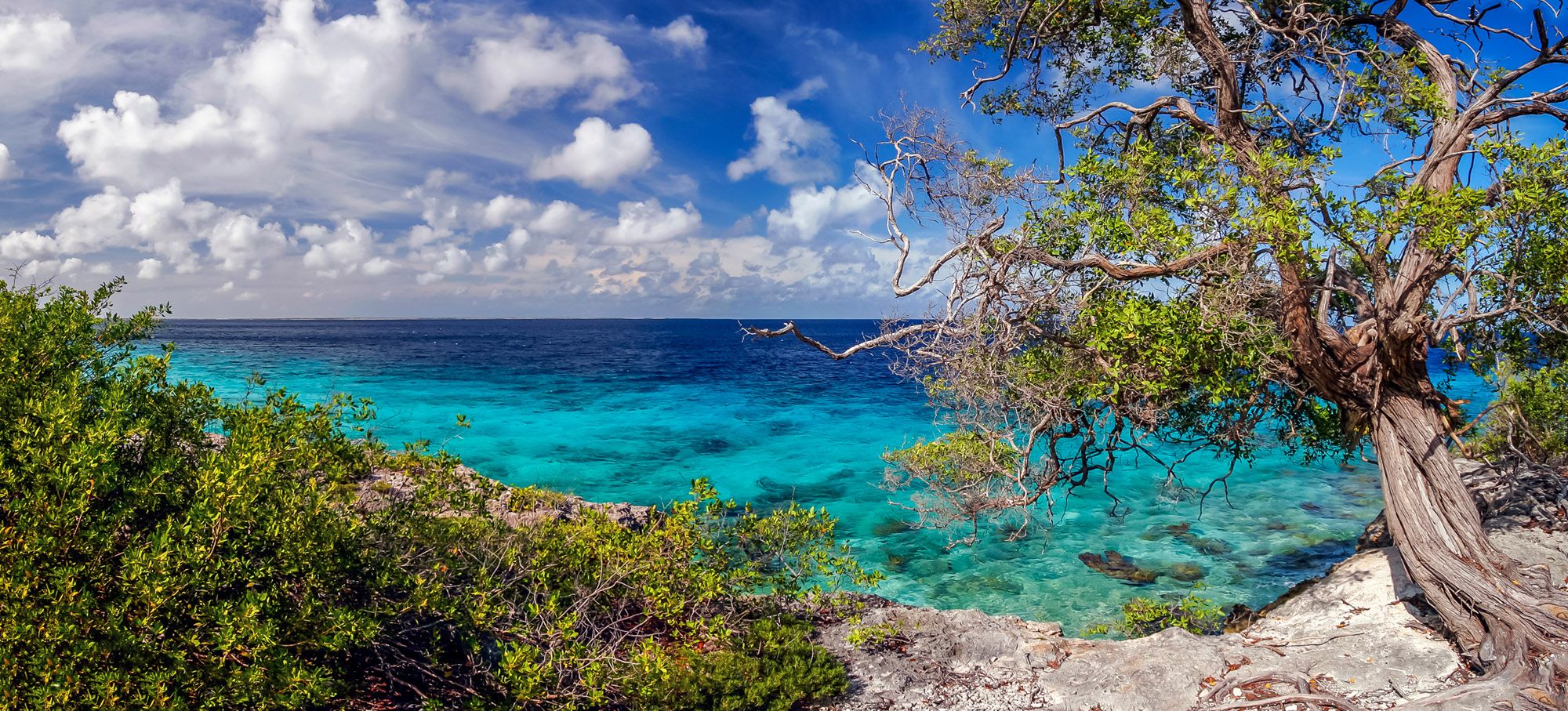
Bonaire is a Dutch island in the Caribbean, which, along with Aruba and Curacao, forms what is usually called the 'ABC' islands. These islands fall within the Kingdom of the Netherlands but are located in the Caribbean in the Lesser Antilles. Bonaire is quite small (about 112 square miles), flat, and has a population of just over 20,000 people.
Bonaire's capital city is called Kralendijk, which essentially means 'coral reef' in Dutch. This speaks to the topography of this island which is mainly made up of coral reefs and seagrass beds in the south. In fact, all the waters surrounding Bonaire, as well as 20 percent of the total landmass of this island, are protected.
Bonaire's rich coral reef environment makes it a great place to go snorkeling. Below are some of the best snorkeling spots in Bonaire.
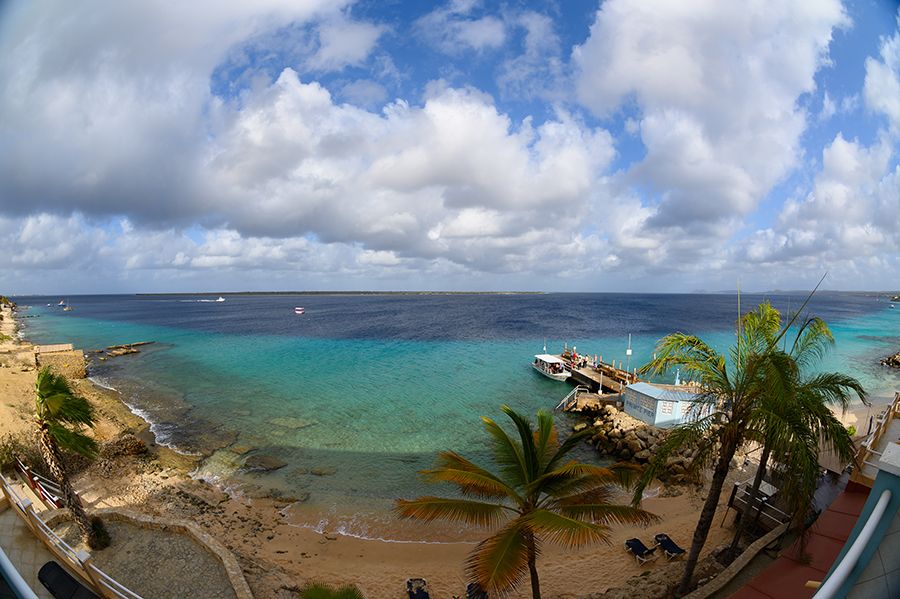
Snorkeling at Bari Reef in Kralendijk, Bonaire, is bound to be a thrilling adventure. To get to the beach, you would need to enter through another beach nearby. Beachgoers are advised to wear comfortable shoes for the rocky shores. Near the concrete structure in this area, snorkelers will see lots of coral and an even wider variety of fish. These include trumpetfish and bluehead wrasse among others.
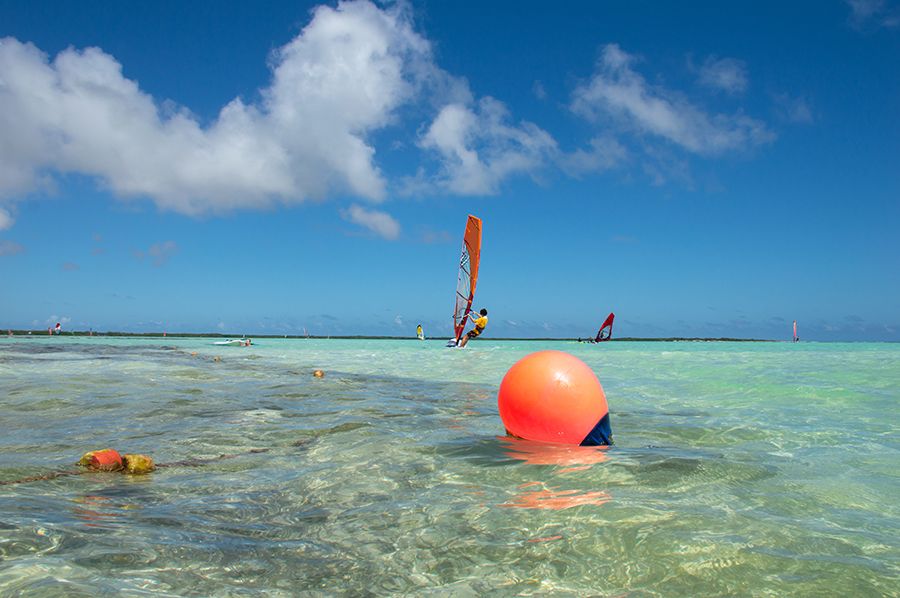
A 15-minute drive from the capital of Kralendijk will take you to Lac Bay in Sorobon Beach. This bay has very shallow waters and, if you choose to dive here, you'll need to swim out a bit to get to the best coral area for snorkeling. Once you get there, you will be rewarded with views of striking staghorn coral and sea life such as parrotfish, eagle rays, and flounder.
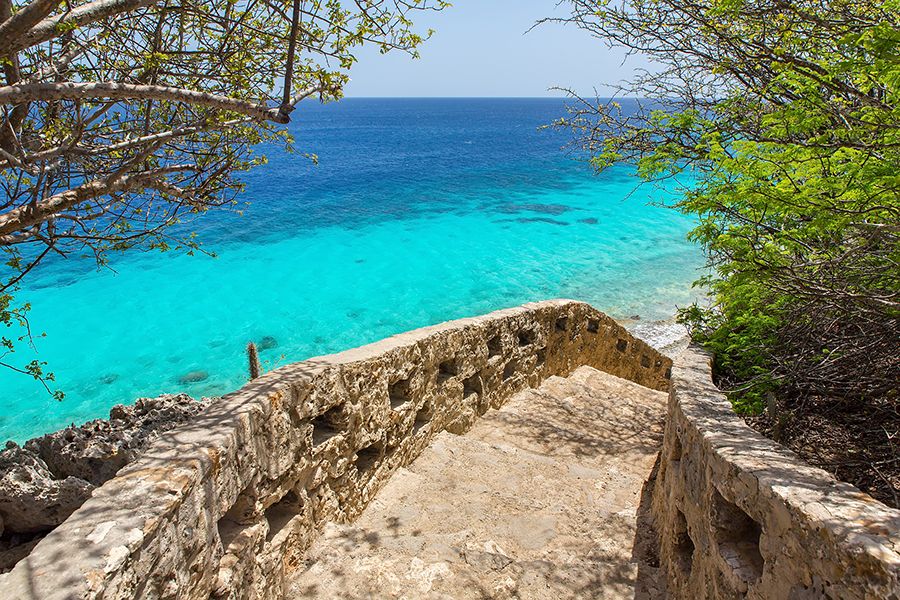
This beach gets its name from the steps one must climb to get to and from it. Though it is not 1,000 steps, it does require exercise. However, it is certainly worth the trouble due to the wide array of coral formations, sponges, and fishes found there. So pack your bags, put on some water shoes and start stepping in the right direction.
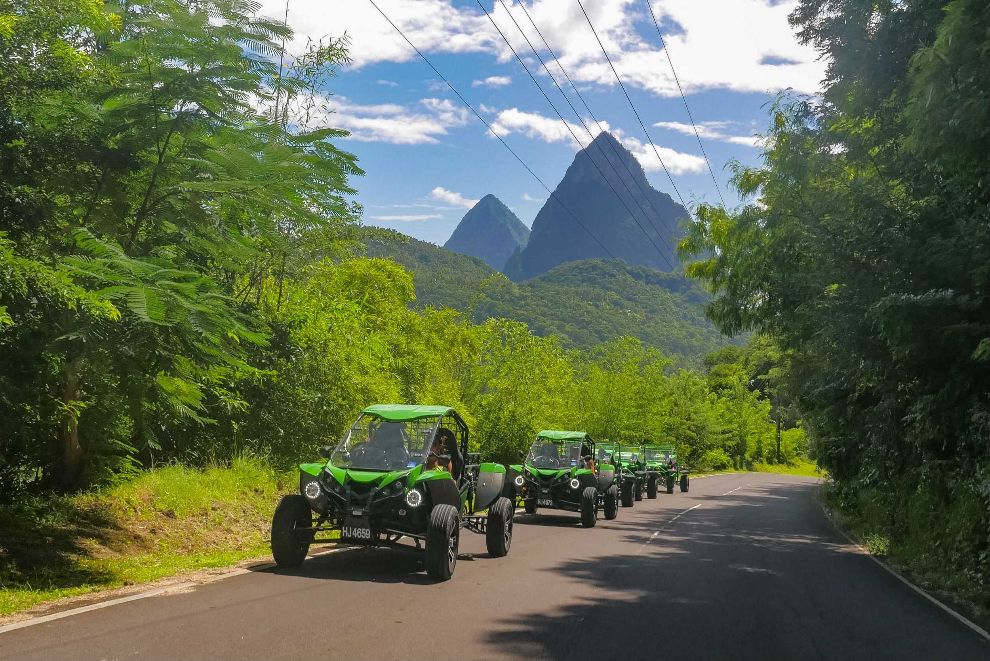
Saint Lucia's ecosystems and coral reefs have been well preserved over the years, which has helped protect some of the island's best snorkeling spots. These can be found all over the country and are suitable for snorkelers of various levels of expertise. Here's what you need to know about
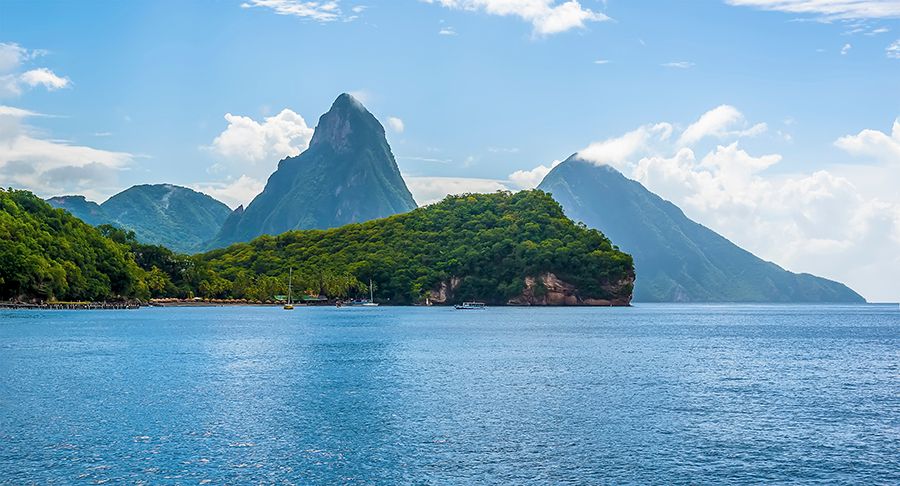
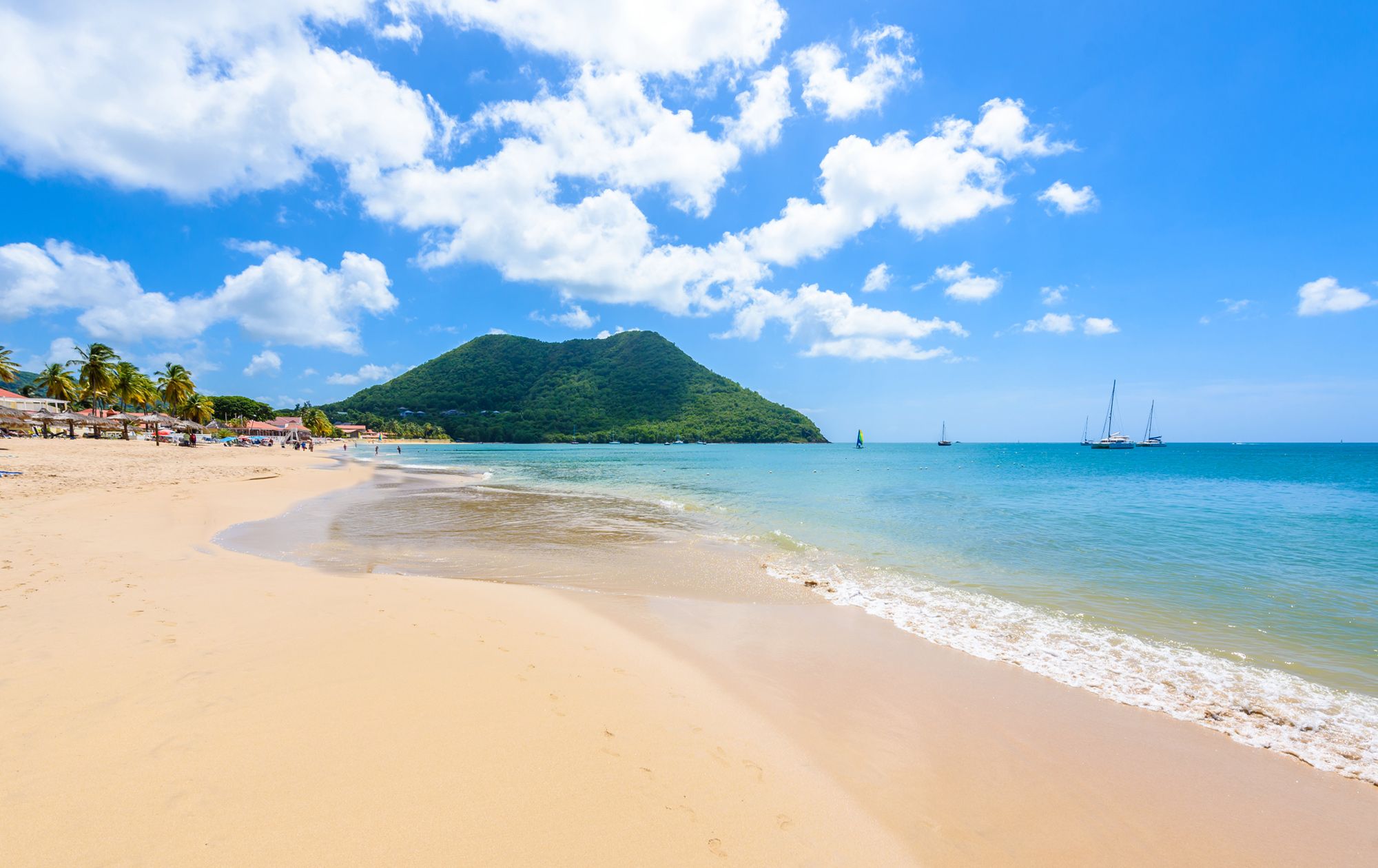
Reduit Beach is in the north of Saint Lucia in the community of Rodney Bay. This is a popular commercial and tourist area. The beach here has a relaxed atmosphere and it is popular with both locals and visitors. Snorkelers who are just starting off will enjoy an experience in these gentle waters where they can see tropical fish, crabs, eels, and more.
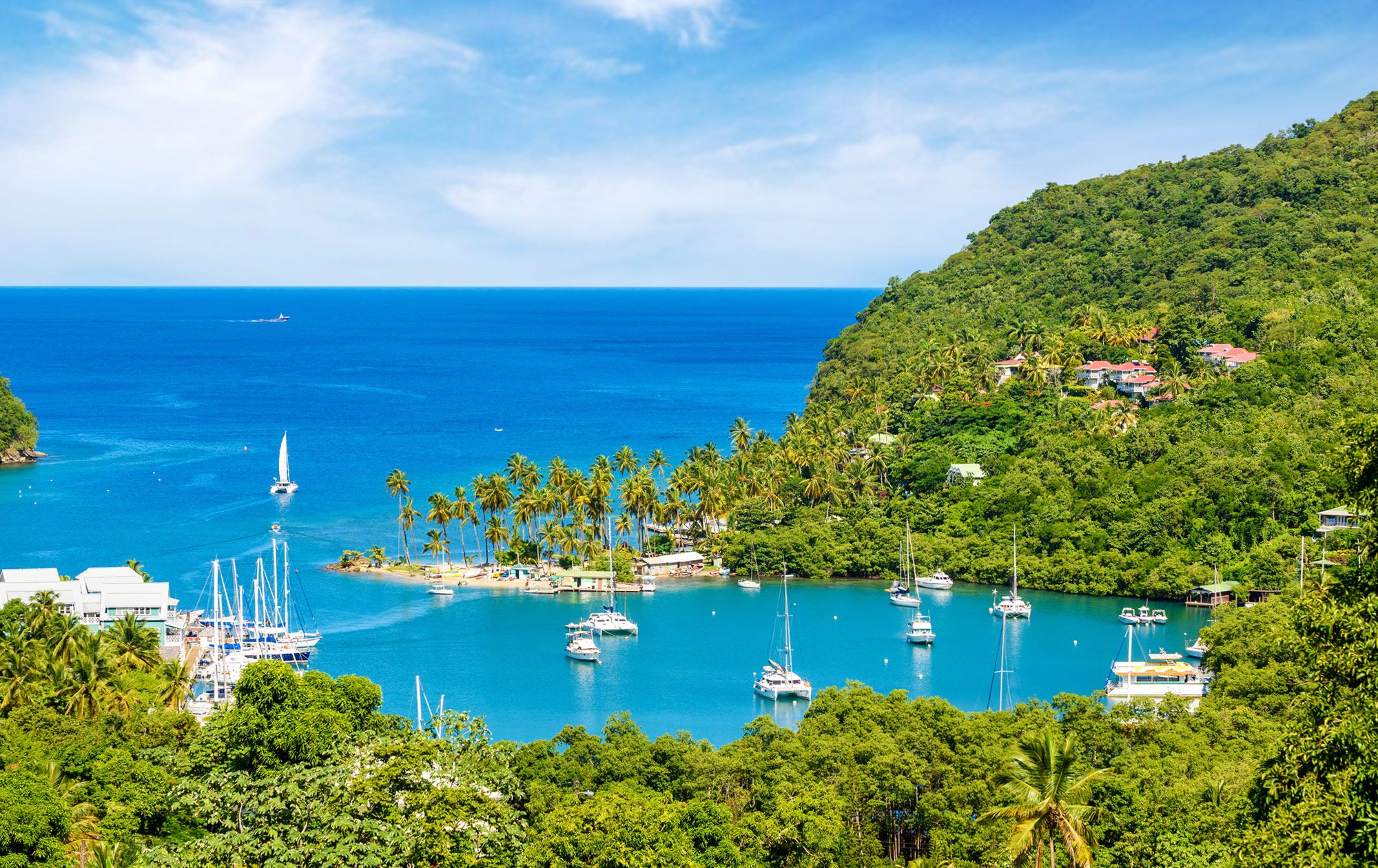
Marigot Bay is a sheltered cove with shallow waters and beautiful scenery. This makes it perfect for a day at the beach whether you'll be spending time with family or the love of your life. Snorkeling at Marigot Bay is relatively easy, so children and beginners can have some safe fun. You'll discover several large coral formations at the bay's northern end, and enjoy the sight of exotic fish and even seahorses.
Expert tip: Staying at one of the
all-inclusive resorts in Saint Lucia allows you to experience some of the best snorkeling in the Caribbean. Some of these resorts are located on the best beaches on this island.
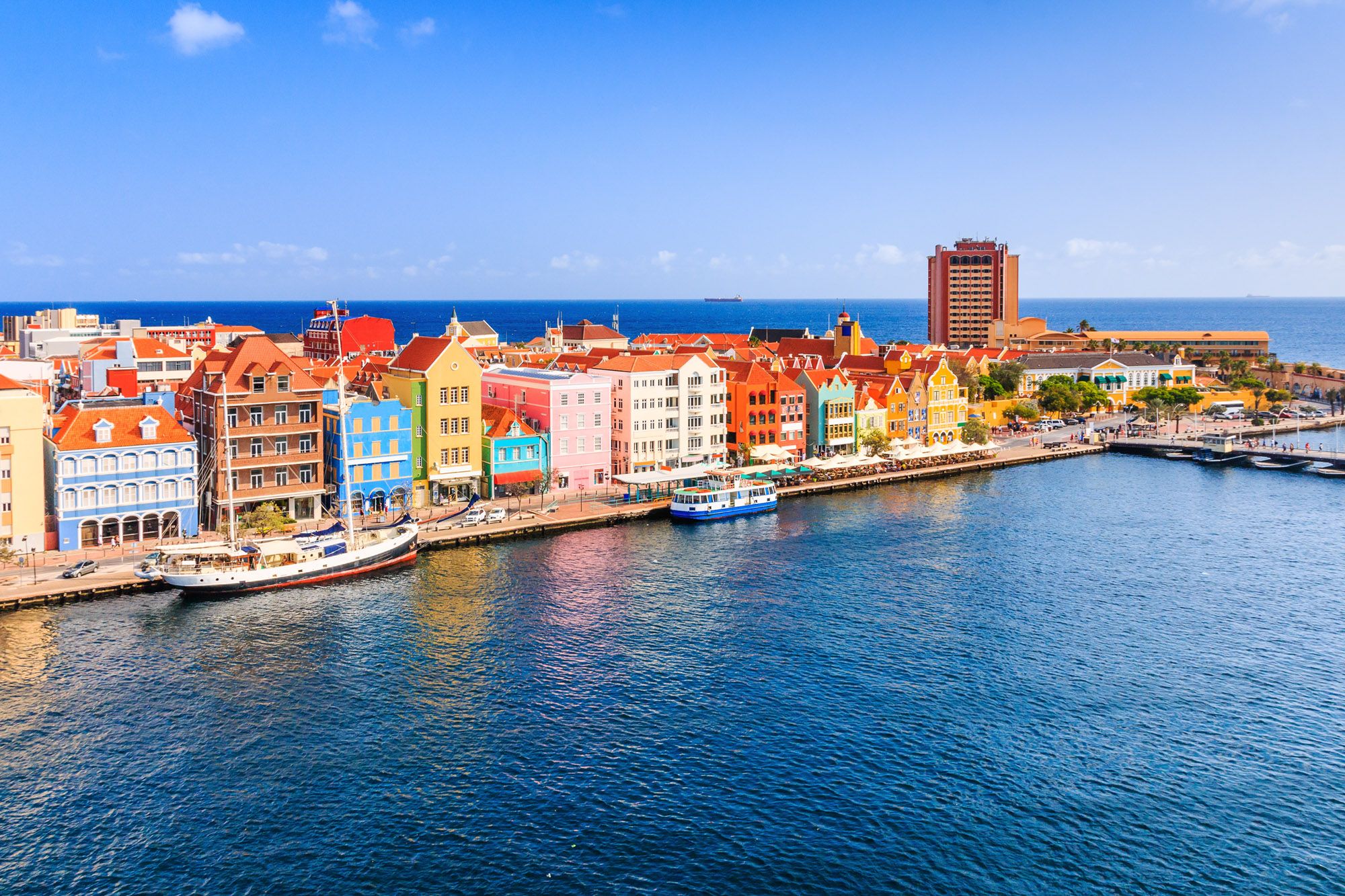
Nevertheless, there is still so much fun you can have in Curacao, whether it be visiting the amazing beaches, learning about its history and culture, or enjoying its natural attractions. You simply can't get bored! In fact, its beaches have made it quite popular, and snorkeling is quite common here with many spots available just offshore without the need for a boat. This makes it easy and convenient to go snorkeling during a Curacao vacation.
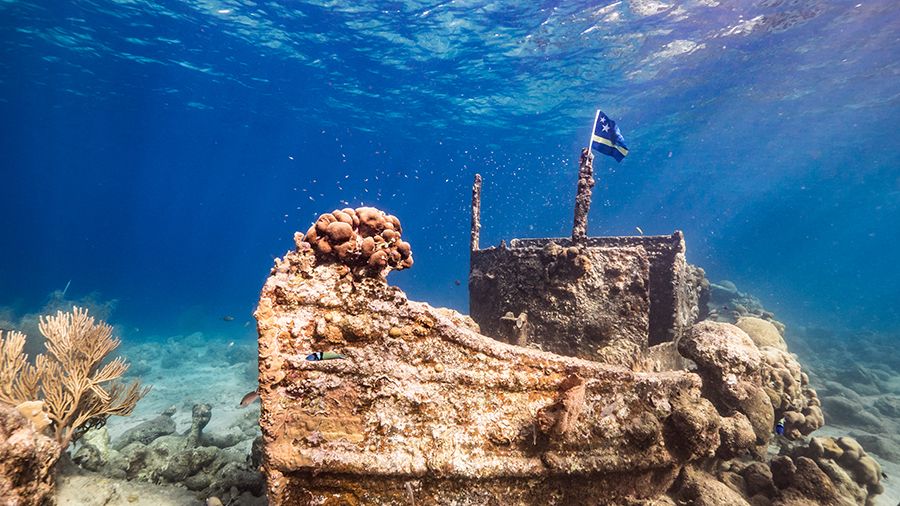
This beach is named after a tugboat that can be found just 16 feet in the water after sinking more than 30 years ago. Since then, it has become very popular among scuba divers and snorkelers eager to explore the shipwreck. Brain coral, sea fans, snapper, moray eels, and surgeonfish can all be found near these ruins.
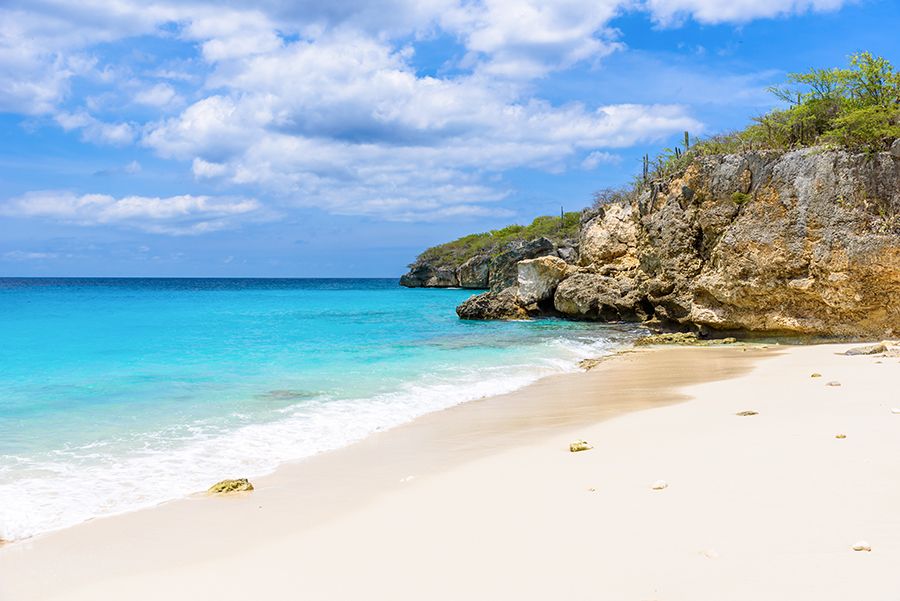
Little Knip Beach is a small but isolated beach in northern Curacao in the western part of the country. Its remote location means that it is kept
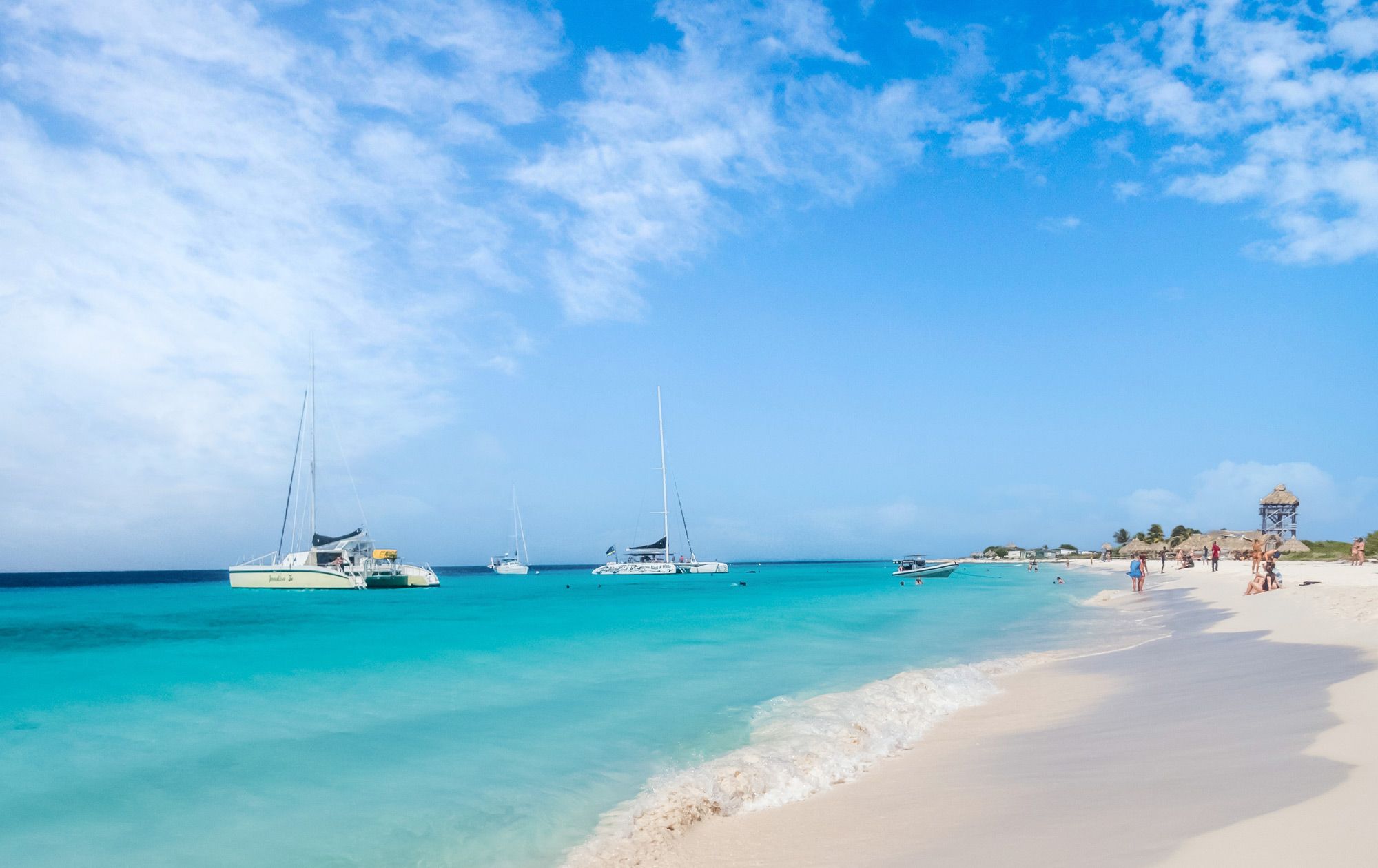
Klein Curacao or 'Little Curacao', as it is known, is a small island situated about six miles from Curacao. Boat trips take visitors from the mainland to this exclusive hideaway where you can explore, bathe, scuba dive, and snorkel as much as you like. Keep an eye out for bonefish, flounder, hogfish, and other marine life amongst the coral reefs.
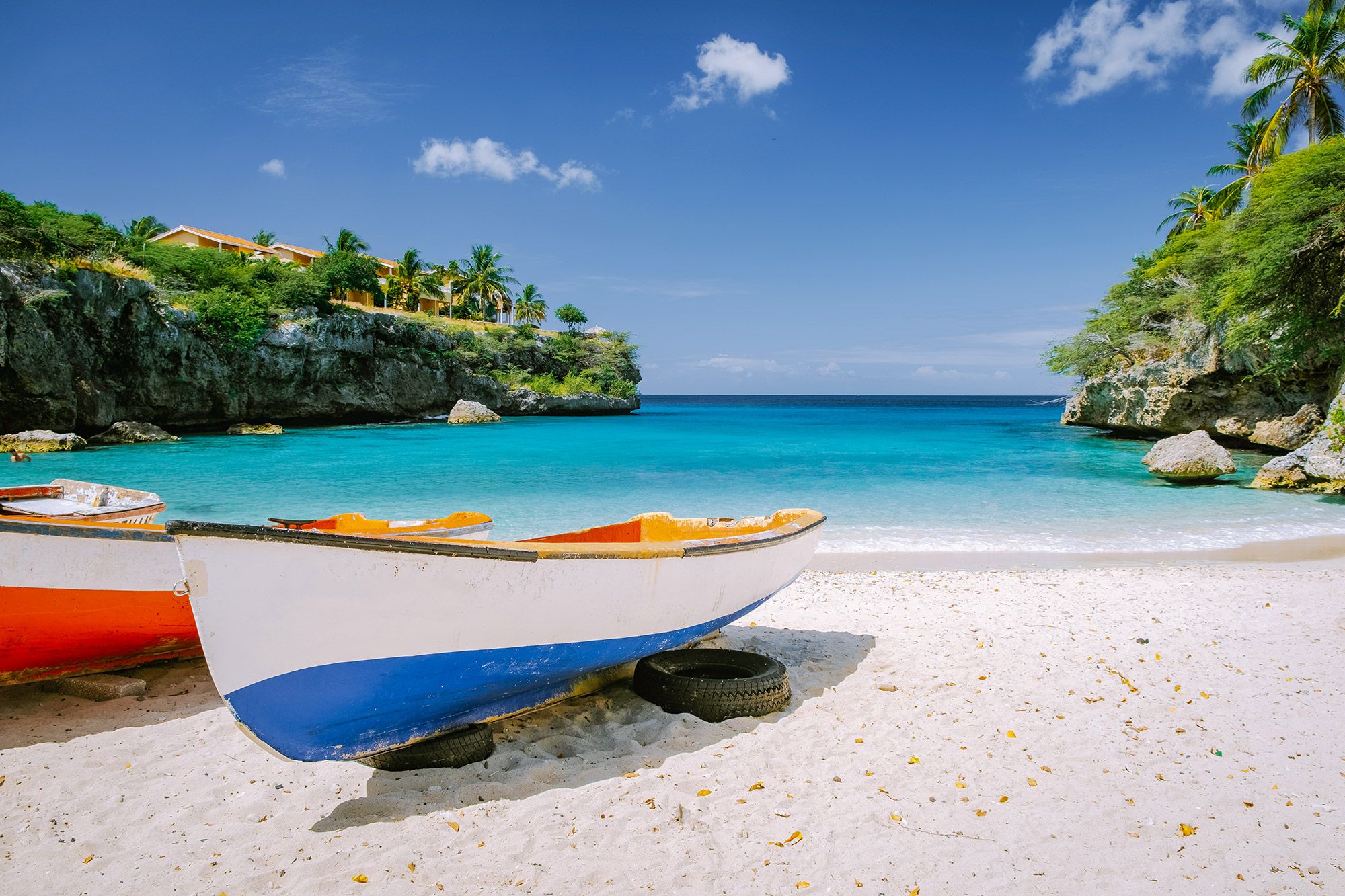
Playa Lagun is a small cove with a beautiful beach that is popular among local and visiting beach lovers. The rock cliffs add to the impressive landscape of this area while also serving as a home for various fish. Snorkelers also benefit from the variety of sea animals like sardines, snappers, and wrasse.
Good to know: Sandals Resorts'
all-inclusive resort in Curacao just might be the perfect place to stay during your snorkeling vacation in Curacao.
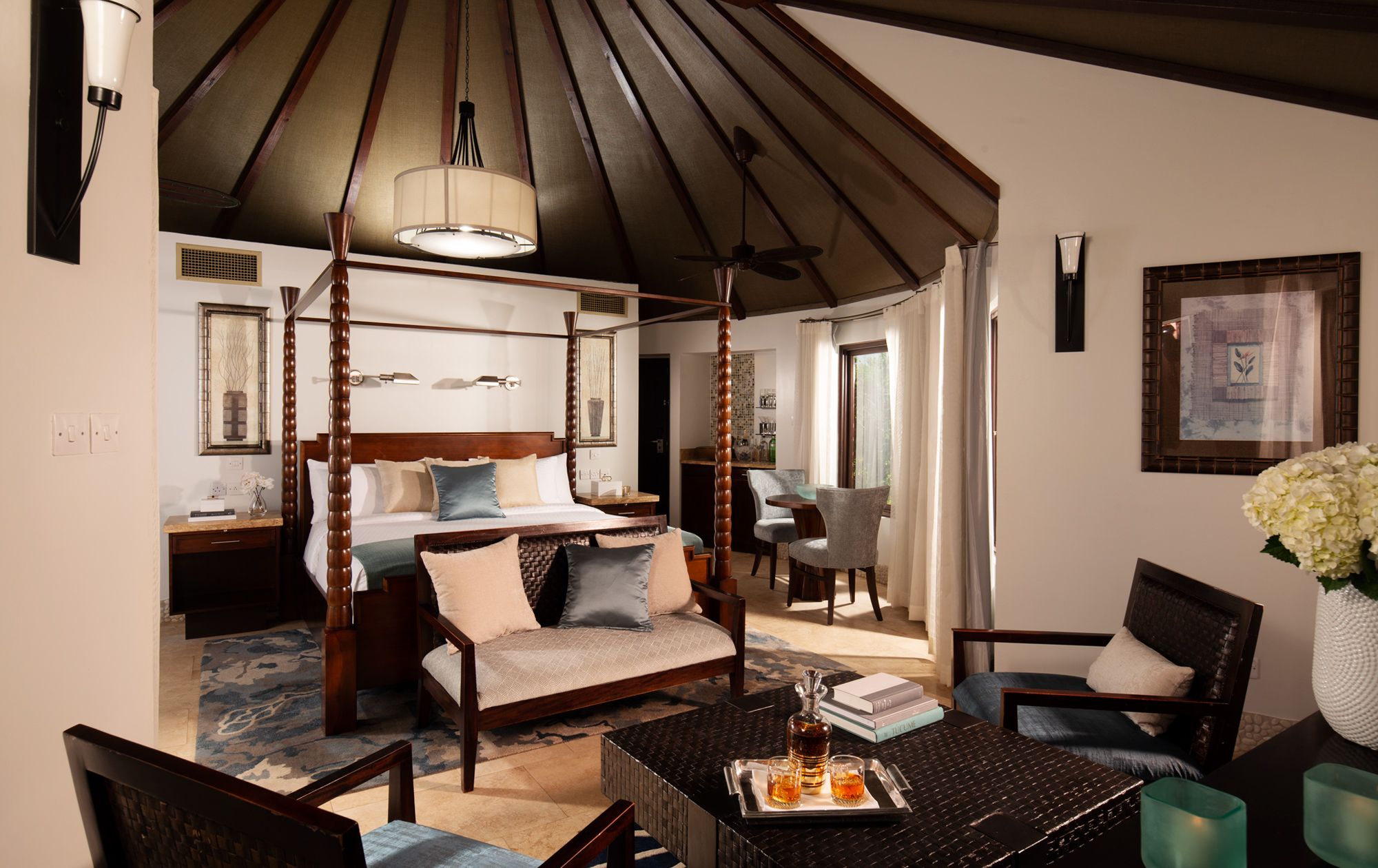
The Caribbean region is known for its crystal-clear waters, vibrant coral reefs, marine parks, and thriving marine life. There's nothing quite like experiencing the ocean from beneath the waves while encountering myriads of colorful and fascinating sea creatures. You might even be able to explore underwater caves and take boat rides out for some of the most exciting reef adventures!
If you choose to go to a top snorkeling destination like Curacao, Saint Lucia, Antigua, or Grenada (among others), you can stay at a
To learn more about planning a Sandals Resort vacation, contact one of our Vincent Vacations Representatives directly, or call 1-888-883-0460
From our storefronts to your destination, we are your dedicated, debt-free, and experienced travel partner.
We are a proud USA-based, 100% female-owned business. Operating completely debt-free, we offer you the stability and peace of mind you deserve when booking your dream vacation.
As a Top 20 Agency with the elite Signature Travel Network, we unlock exclusive perks, upgrades, and amenities for you that you can't find anywhere else.
Serving clients since 2013 with leadership selling travel since 2002. Our team of professionals brings decades of real-world travel experience to your itinerary.
While we have physical storefront locations you can visit, we are fully equipped to book travel for clients residing in every state across the USA.
We are a company that can be trusted. We advocate for you from the moment you book until you return home, ensuring a seamless experience.
Click on a location below to learn more. We recognize that vacations are not just an investment, but often the highlights of our lives, and we take that responsibility seriously. We want to ensure you have the best experience.
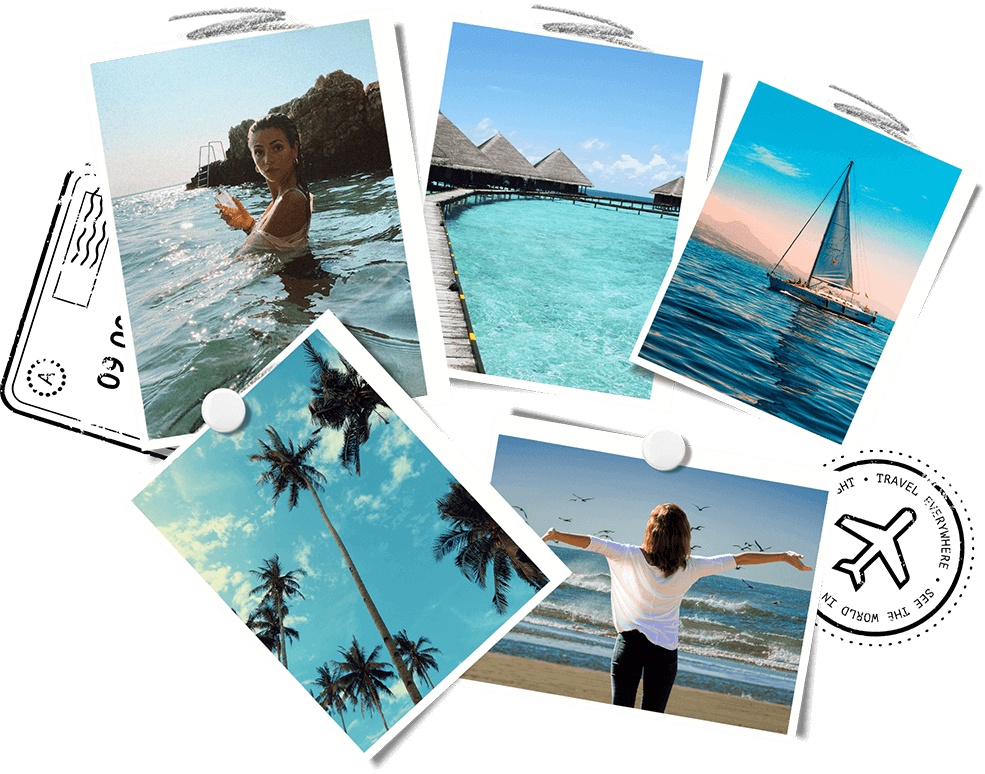
All of these are signs that you are a great fit to become an independent travel agent, and turn your love of travel from passion into profit!
Learn MoreOur motto at Vincent Vacations is, we go so you know! We want to ensure you have the BEST experience, whether it's a river cruise, or a corporate group incentive trip, we want to ensure your vacation is a success.
We serve customers all across the USA
Debt free and in business since 2013. Vincent Vacations has agents in Dallas, Kansas City, Houston, Shreveport, Little Rock, Roswell, Oklahoma City and more locations.

Travel agents can help save time and stress by doing the research and handling all your bookings for you. An experience travel agent is best at finding great deals and packages, as well as providing you with helpful information and tips. They can also help you plan special activities and experiences that you may not have thought of on your own. All in all, using a travel agent can be a great way to make sure you get the most out of your trip.
In travel since 2002, and in business since 2013, our travel team serves clients all over the US! Planning a vacation away from home takes a great team. We have taken the time to build a team of dedicated, smart, hard-working personnel who are each committed to excellence and service. We work side-by-side, creating and ensuring INCREDIBLE vacation experiences for you and your group. Our store front in-office team, and our travel consultant independent contractors, work all around the US.
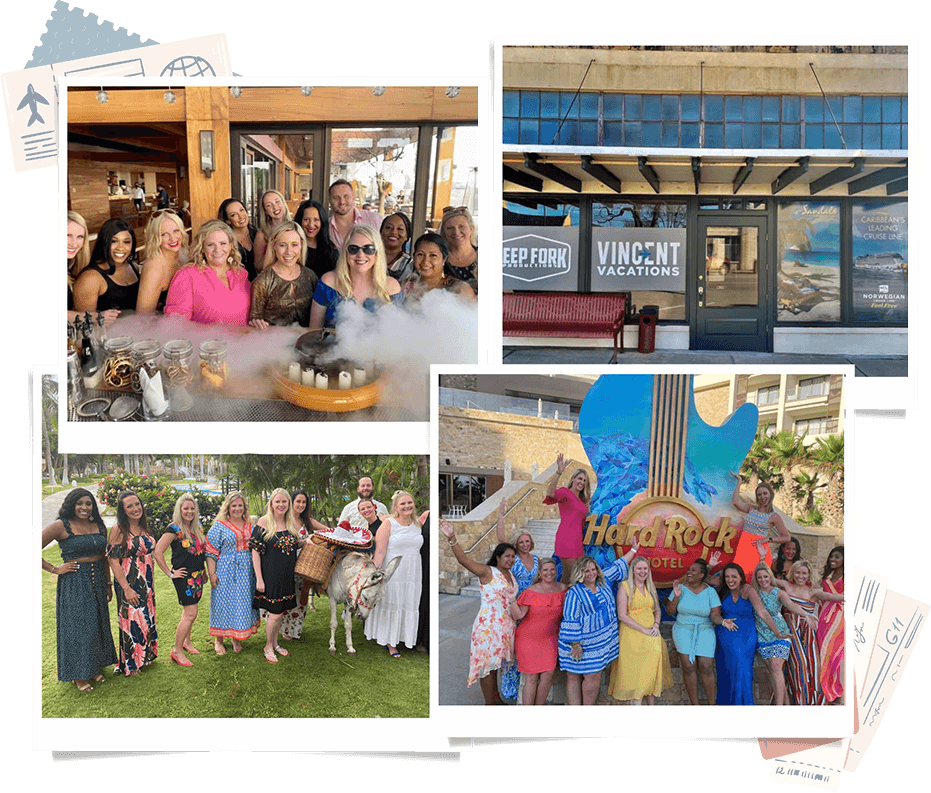
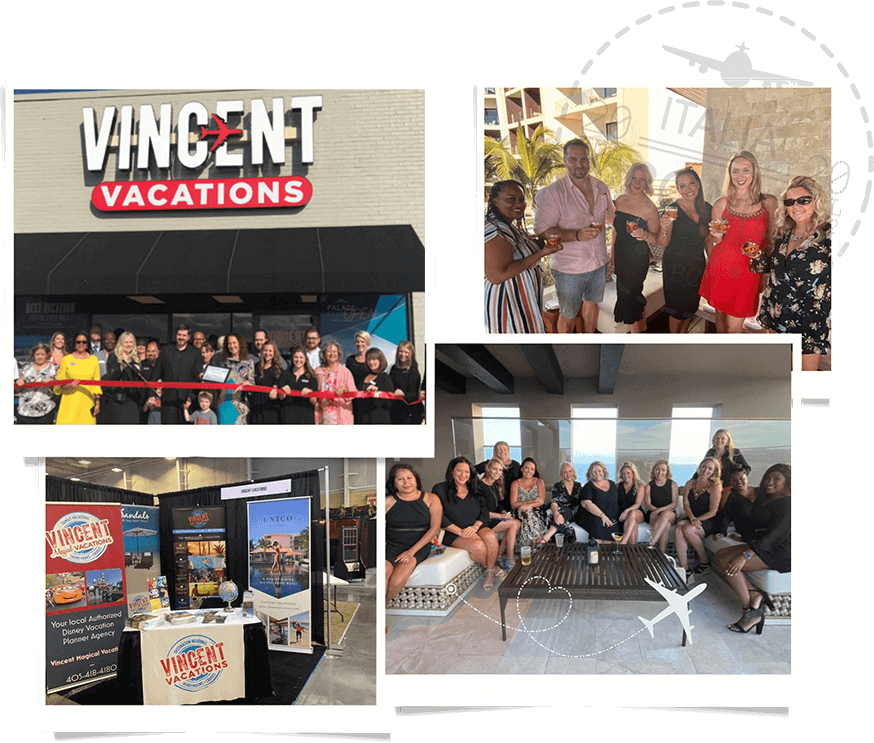
In business since 2013, we are your #1 source for travel!
Free Vacation Package Quote